price discrimination
description: pricing strategy of offering similar products at different prices according to buyers' willingness to pay
84 results
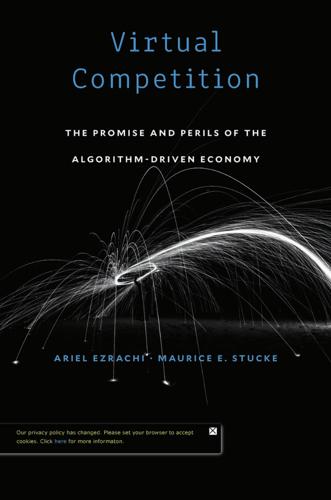
Virtual Competition
by
Ariel Ezrachi
and
Maurice E. Stucke
Published 30 Nov 2016
Chronicling the advancements in tracking us and collecting our data, this chapter explores whether perfect price discrimination is on the horizon. The immediate answer, to paraphrase St. Thomas Aquinas’s comment on happiness, is that perfect price discrimination is not possible on earth, but better forms of imperfect price discrimination are possible. Not Your Grandmother’s Marketplace You may wonder how can any company price discriminate online, when rivals, one or two clicks away, offer the same item at an everyday low price? How are online firms able to minimize the attractiveness of the consumer’s outside options? What economists and competition lawyers call “price discrimination,” online industry participants call “price optimization” or “dynamic differential pricing”.
…
The Neoclassical Economists’ Take on Price Discrimination Do we lose when sellers discriminate? Well, it depends. At times we will; at other times we won’t. Price discrimination could generate a mixture of 117 118 Behavioral Discrimination effects under different market conditions. Not surprisingly, economists debate over the net welfare effects of price discrimination. Some view it more negatively than others. For instance, two economists, Leeson and Sobel, suggest that when the costs of implementing price discrimination are taken into account, its efficiency is doubtful.2 Price discrimination can, at times, yield distinct efficiencies and welfare gains, including: • • • • • Increasing output, facilitating the recovery of high fixed costs, and allowing certain businesses, which would not otherwise have existed, to operate profitably.3 For instance, railway companies may depend on temporal price discrimination between peak and off-peak travel or between advanced bookings or loyalty schemes, to attract enough business to keep their ser vices running.
…
Some instead imperfectly price discriminated, a practice also known as third-degree price discrimination. Here the sellers segmented their customers into broad categories, which were charged different prices. For instance, movie houses imperfectly price discriminated for decades by charging different prices for adults, children, students, and the elderly (on the assumption that students and the elderly generally have less discretionary income and a lower reservation price). Limiting Arbitrage Limiting arbitrage is the second requirement for successful price discrimination. This concerns the seller’s ability to prevent customers who pay a lower price from reselling the product to customers willing to pay a higher price.
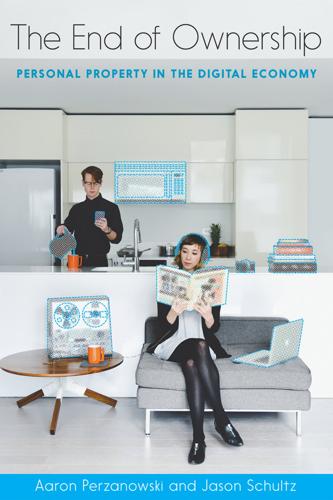
The End of Ownership: Personal Property in the Digital Economy
by
Aaron Perzanowski
and
Jason Schultz
Published 4 Nov 2016
If customers can license the precise rights that meet their needs—to read a book, but not lend it, or to watch a movie on your smartphone, but not on your TV—they can pay accordingly, and everyone wins. We will return to price discrimination—the notion of charging different customers different prices depending on their specific preferences and willingness to pay. For now, it’s enough to say that we agree that certain forms of price discrimination increase consumer choice in valuable ways. But we think the benefits of price discrimination are often overstated, and that it can do more harm than good if unrestrained. Today, we operate in a market that—for the most part—affords a choice between ownership and more conditional, impermanent access to digital and physical goods.
…
The question isn’t why sellers want to put a stop to resale markets, it’s whether we should let them. Advocates of price discrimination argue that it benefits consumers, or at least that it can. First, price discrimination—the argument goes—can keep prices low by requiring wealthy buyers to subsidize more price-sensitive shoppers. Second, it creates incentives for product differentiation that increases consumer choice. We think there are good reasons to be skeptical of both of these theoretical upsides. We acknowledge that there are times when particular subsets of consumers benefit from price discrimination. But on the whole, it is a strategy that transfers money and control from the public to rights holders.
…
Let’s think about price first. How does price discrimination keep prices low? Without price discrimination—as Judge Easterbrook argued—ProCD could be forced to raise its prices. Instead of selling its low-cost product for $150, it might have to raise the price to $200 to account for lost revenue from higher-priced sales to commercial users. This is essentially the same argument John Wiley made to the Supreme Court; if it couldn’t discriminate against U.S. students through high prices, it would be forced to raise the prices for Thai students. These examples both show how price discrimination can help relatively poor consumers at the expense of wealthier ones.
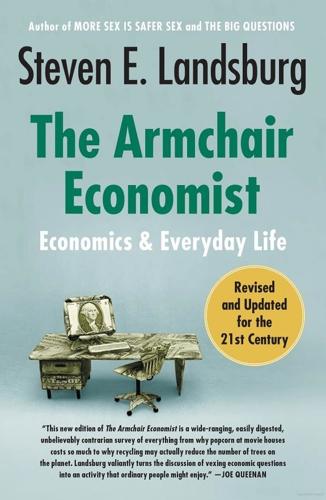
The Armchair Economist: Economics and Everyday Life
by
Steven E. Landsburg
Published 1 May 2012
Senior citizens don't get wheat discounts because there are too many opportunists like me around. Price discrimination can succeed only where it cannot be competed away. If price discrimination is viable only for a monopolist, and if price discrimination is as common as our many examples seem to indicate, we are forced to conclude that monopolies are everywhere. But many economists—including most of those whom I know well—are quite skeptical of that conclusion. From this skepticism, there arises a parlor game. The game is to take examples of apparent price discrimination and debunk them. The goal is to argue convincingly that the single product being sold at two different prices is not a single product at all but two quite different products.
…
Any giveaway that is claimed by only some buyers (such as trading stamps or free delivery) can be a form of price discrimination, as is a policy of "ten cents apiece, Why Popcorn Costs More at the Movies 163 three for a quarter." Leaded gasoline sells for less than unleaded gasoline despite comparable production costs, free coffee refills mean that some people pay more per cup than others, and two prices at the salad bar depend on whether you order a complete meal or just the salad. Price discrimination, in short, appears ubiquitous. Yet there is a good theoretical reason to believe that price discrimination should be relatively rare, and therein lies a puzzle.
…
Even if for some reason existing theaters were insufficiently competitive to bring down the price, the lure of high popcorn profits should suffice to spur new theater construction. Newcomers would offer discounts and the price wars would be underway. So one more ingredient must be added to the price discrimination story. Price discrimination can work only when the seller has a monopoly of the appropriate kind. (The theater owner needs a monopoly in the theater market, not just the popcorn market, to make price discrimination work.) If Wegman's grocery store can profitably sell detergent at 50 cents off to coupon clippers, then it can profitably sell detergent at 50 cents off to anyone. If Wegman's archrival, Tops, advertises "no coupons but all prices 10 cents lower than Wegman's," it can strip away 164 HOW MARKETS WORK all of Wegman's nonclipping customers and earn 40 cents more on each sale than Wegman's (now catering to clippers only) earns.
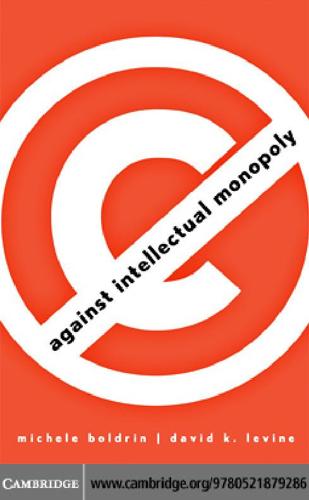
Against Intellectual Monopoly
by
Michele Boldrin
and
David K. Levine
Published 6 Jul 2008
The key word in the former statement is “enough”: how much profit amounts to “enough” profit? The second caveat is a bit longer as it is concerned with price discrimination, and we examine it next. The example of AIDS drugs brings out another feature of monopolies – their desire to price discriminate. That is, competitors charge the same price to everyone, but monopolies try to extract a higher price from those who value the product more highly. Economists usually argue that this is a good thing because monopoly without price discrimination is even worse than monopoly with price discrimination. Price discrimination, they argue, enables lower-valued consumers to purchase a product that otherwise the monopoly would not sell to them.
…
Relatively speaking – that is, relative to a world where the monopolist does not price discriminate – this is a correct statement. In the case of AIDS drugs, effective price discrimination would enable the large pharmaceutical companies to charge a low price to poor Africans without lowering the price they charge rich Westerners. A more successful example of price discrimination for drugs is the low price charged to poor Canadians against the high price charged to rich Americans. In practice, however, it is both difficult and costly to price discriminate. Experience suggests that though it is relatively easy to find consumers who highly value a product and are willing to pay a high price, there is not much selling by monopolies at low prices to consumers who are only willing or able to pay a low price.
…
Their problem is the loss of monopoly profits in markets other than the African one. This example is, in fact, quite general: intellectual monopolists often fail to price discriminate because doing so would generate competition from their own consumers. Effective price discrimination is costly to implement and this cost represents pure waste. For example, music producers love digital rights management (DRM) because it enables them to price discriminate. The reason that DVDs have country codes, for example, is to prevent cheap DVDs sold in one country from being resold in another country where they have a higher price.
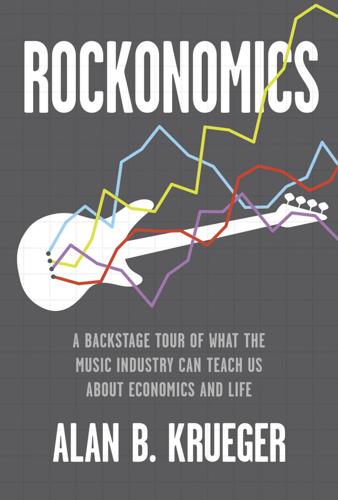
Rockonomics: A Backstage Tour of What the Music Industry Can Teach Us About Economics and Life
by
Alan B. Krueger
Published 3 Jun 2019
For example, Apple makes money from selling iPhones, iPads, and computers, and runs Apple Music at a loss as a way to drive device sales.3 Price discrimination is profitable. When a band or business has a unique product to sell, and if it can restrict the resale of that product, it can greatly increase its revenue and profit by charging a higher price to customers who are willing to pay more and a lower price to those who are willing to pay less. Economists use the term price discrimination to refer to any practice used to segment customers and charge a higher price to some than to others. Airlines figured this out long ago. Price discrimination is not immoral or illegal. It helps explain why Taylor Swift delays the release of her new records on streaming services until after she sells albums to her most devoted fans.
…
It helps explain why Taylor Swift delays the release of her new records on streaming services until after she sells albums to her most devoted fans. Charging different prices for different seats at a concert is a way for musicians to price-discriminate and charge fans according to their willingness to pay. And bundling different products—such as twelve songs on an album, as opposed to selling them individually—can facilitate price discrimination. Costs can kill. Making money, even a lot of money, is not a guarantee of success. Successful bands and businesses have to monitor and minimize their costs to maximize their profits. They invest wisely but not excessively, and negotiate to cut costs when they can.
…
Radiohead’s pay-what-you-want experiment provided real-world evidence that considerations of fairness can motivate human behavior. You can count on some people to be generous—and others to be greedy. Increasingly musicians are figuring out ways to charge more to consumers who are willing to pay more, a practice called price discrimination. Indeed, Taylor Swift’s strategy for the release of Reputation can be seen as a clever form of price discrimination. Her hard-core fans, who were willing to pay the most, opted to purchase her album as soon as it was released, at a higher price. Others who were more price sensitive waited until it was available through streaming services. Sources of Musician Incomes Most of the money collected from recorded music does not go to the musicians who created the music.

The Content Trap: A Strategist's Guide to Digital Change
by
Bharat Anand
Published 17 Oct 2016
To begin, consider “fantasy pricing”: a world where the company could charge each customer separately for each product (this ideal scenario is termed “perfect price discrimination”). The company would then price spreadsheets at $10 for the analyst (or $9.99, to ensure the sale) and $2 for the journalist, and charge the reverse for the word processing package. What would total revenue be? Twenty-four dollars. Of course, perfect price discrimination is not only hard, it’s illegal. Typically, companies set a price for each product and let customers choose. In that case, the best prices to charge are $10 for each software product. The company now sells two, not four, units—for revenue of $20. Not being able to perfectly price discriminate means that certain sales are forgone.
…
Miss the connection between digital pricing and its impact on print readers and the Times would have experienced a very different outcome. Charging different prices to different consumers is a classic strategy that economists call “price discrimination.” The jargon is hardly elegant, but it captures a simple idea: It pays to separate consumers by charging different prices. The Times faced the core problem of all price discrimination efforts: Try to target certain customers with the price that’s right for them and you risk attracting customers otherwise willing to pay more. Ignore these “connections” across customer groups and your pricing strategy will unravel.
…
To monetize these advantages, Tencent turned again to price discrimination. Borrowing from a trend started by Korean game companies, it offered games free but charged for features that would enhance the playing experience. Consider one, the pay-to-skip feature. One frustrating thing about playing a game is not being able to progress beyond the initial stages. Often this happens not because a player lacks the ability to improve but because she lacks the time to do so. Against this backdrop, powerful virtual swords or guns are perfect price discrimination tools. Hard-core gamers don’t need them, but amateurs—particularly those who can’t afford to spend more time but do have the money—jump at the chance.
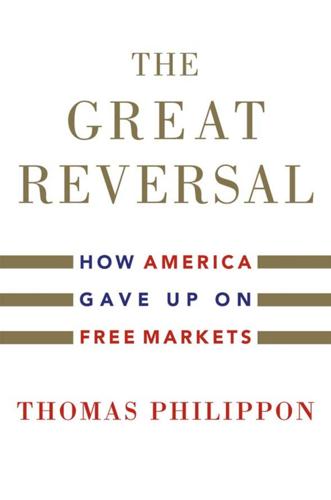
The Great Reversal: How America Gave Up on Free Markets
by
Thomas Philippon
Published 29 Oct 2019
As Cornell University professor Saule Omarova observed, “If Amazon can see your bank data and assets, [what is to stop them from] selling you a loan at the maximum price they know you are able to pay?”c This highlights the growing issue of price discrimination, defined formally in Box 14.2. Is price discrimination in a market good or bad? The answer depends mostly on whether there is free entry in that market, or at least if the market is contestable. Price discrimination is efficient in the sense that it maximizes the total surplus of all transactions. When the firm has all the information, it can propose a price or a contract that is specific to each client and acceptable to each client.
…
Now we will consider the case of price discrimination. Imagine that the firm can tell A from B. It can then offer two prices, pa = va and pb = vb. There is no risk of type A being priced out. In that sense, price discrimination is efficient. On the other hand, the firm makes a killing: it extracts all the surplus from the consumers. This is why free entry is so important when firms can discriminate. With discrimination and free entry, the market is efficient, and the consumers end up with the surplus. What is the solution? You guessed it: free entry! With efficient price discrimination and free entry, we can have the best of both worlds.
…
Without discrimination, there are cross-subsidies, and some people can be priced out. The concern, however, is that a monopoly with full information can extract all the surplus. This is the fear expressed by Omarova. The key point here is that free entry becomes more important when firms increase price discrimination. Platforms use a variety of tools to limit competition, and sometimes that involves preventing price discrimination. Nobel Prize–winning economist Jean Tirole (2017) emphasizes the role of price coherence, also called the “most favored nation” clause. That name is a metaphor that comes from international trade agreements. The idea is that a platform will prevent its merchants from offering lower prices outside the platform.
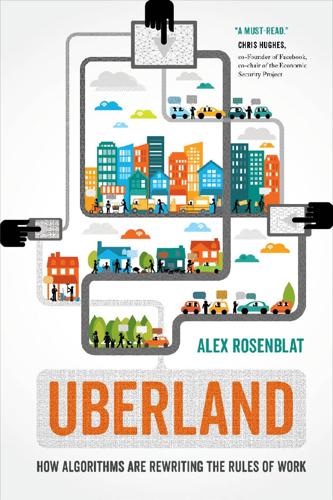
Uberland: How Algorithms Are Rewriting the Rules of Work
by
Alex Rosenblat
Published 22 Oct 2018
By directing consumers to the sellers it charges for service, Amazon was able to improve its bottom line.7 Effectively, the company put on a show of mathematical prowess: it analyzed dozens of pricing and shipping combinations, then used that information to ultimately disadvantage consumers with the results. Price discrimination, or price gouging, is hardly new, but the rise of e-commerce businesses, like Amazon, that use Big Data to personalize product recommendations raises sharper considerations. Are customers being steered to higher-priced products without their knowledge? Are they charged higher prices for the same products sold to other, similarly situated customers?
…
Are they charged higher prices for the same products sold to other, similarly situated customers? As several university researchers in computer science have shown, “personalization on e-commerce sites may also be used to the user’s disadvantage by manipulating the products shown (price steering) or by customizing the prices of products (price discrimination). Unfortunately, today, we lack the tools and techniques necessary to be able to detect such behavior.”8 On the Staples website, for example, consumers can be served different prices depending on their zip code. A consumer who is located farther from a Staples competitor, like Home Depot, is shown higher prices.9 Airline and hotel brokers, like Orbitz, also use algorithmic pricing to serve higher- or lower-priced options or recommendations to passengers.
…
Travis Kalanick, Uber’s cofounder and former CEO, reiterated the neutrality of Uber’s surge algorithm when he said, with reference to surges, “We are not setting the price. The market is setting the price.”36 However, Uber appears to be charging different prices for similarly situated customers—a practice known as dynamic price discrimination, which some customers and commentators find alarming. Research by computer scientists Le Chen, Alan Mislove, and Christo Wilson measured the prices that Uber’s application programming interface set for rides for various passengers during customer surges in various areas, then examined those prices against the prices passengers actually received (the surge premium displayed in the passenger app).37 They found a discrepancy, with users in the same surge zone at the same time receiving different prices.
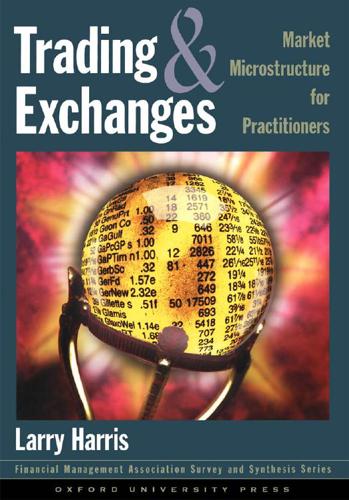
Trading and Exchanges: Market Microstructure for Practitioners
by
Larry Harris
Published 2 Jan 2003
Traders therefore are more aggressive when trading under the uniform pricing rule than under the discriminatory pricing rule. The benefits from price discrimination that large traders actually obtain relative to uniform pricing therefore are smaller than they would be if traders issued the same orders under either rule. The effects of price discrimination on limit order traders likewise are overstated. Since markets want to encourage traders to bid and offer aggressively, continuous trading markets might consider adopting the uniform pricing rule instead of the discriminatory pricing rule. Continuous markets cannot enforce uniform pricing, however. Large traders who want to price-discriminate can circumvent the uniform rule by breaking up their orders and submitting them as a sequence of smaller orders.
…
At exchanges that do not have such facilities, large traders give their orders to honest brokers who expose them selectively, or they break their orders into small pieces so that nobody can determine their full size. 15.2.3 The Price Discrimination Problem Block initiators have trouble finding liquidity because block liquidity suppliers are afraid that they will price discriminate among them. Block liquidity suppliers do not want to be the first to offer liquidity to a large trader, only to see prices move against them when the large trader continues to trade. They therefore want to know how much the large trader truly wants to trade before they offer liquidity. Block initiators—especially those whose orders are not so large that they will greatly benefit from price discriminating—may obtain better prices from block liquidity suppliers if they can credibly convince them of the true sizes of their orders.
…
Front runners capture the benefits of price discrimination that large traders would otherwise obtain. In continuous auctions, large traders typically split their orders so that they can discriminate among the traders who offer them liquidity. They want to trade first with those traders offering the best prices and then, if necessary, with traders offering inferior prices. Splitting their orders thus produces a better average price than they would obtain if they had to fill their entire order at a single price. Front runners appropriate the benefits of price discrimination by taking liquidity from the traders offering the best prices.

People, Power, and Profits: Progressive Capitalism for an Age of Discontent
by
Joseph E. Stiglitz
Published 22 Apr 2019
For a discussion of price discrimination in the context of Big Data, see Silvia Merler, “Big Data and First-Degree Price Discrimination,” Bruegel, Feb. 20, 2017, available at http://bruegel.org/2017/02/big-data-and-first-degree-price-discrimination/. 18.The standard argument for efficiency of markets is based on the notion that individuals’ marginal valuation of a good are the same and the same as the marginal cost, and this is true because they all face the same prices. While there can still be market efficiency if there is perfect price discrimination, the real world of imperfect price discrimination is marked by pervasive inefficiencies and distortions.
…
In the following paragraphs, I describe some of the promising ideas. Big Data and customer targeting Because AI and Big Data enable firms to assess how much each individual values different products and is therefore willing to pay, they give these firms the power to price discriminate, to charge more to those customers who value the product more or who have fewer options.17 Price discrimination not only is unfair, but it also undermines the efficiency of the economy: standard economic theory is based on the absence of discriminatory pricing.18 Everyone pays the same price. But with AI and Big Data, different people can pay different prices.
…
In fact, in this and many other arenas, there is no effective choice.32 There are still other manifestations of the existence and depth of market power. In a competitive market, a firm can’t charge different customers different prices for the same thing—price is determined by the (marginal) cost of production, not by the value the customer places on the good. Yet such price discrimination has become commonplace in our digital economy, as we discuss further in chapter 6. Innovation in creating market power There can be little doubt that there has been an increase in market power. The question then is why. I described earlier Warren Buffett’s view that the best way to ensure sustained profits is for firms to surround themselves with moats that create barriers to entry, preventing profits from being eroded by the competition that new entrants would provide.
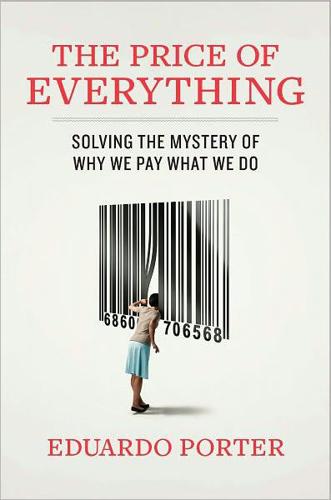
The Price of Everything: And the Hidden Logic of Value
by
Eduardo Porter
Published 4 Jan 2011
Regulatory Reform in the Airline Industry,” NBER Working Paper, September 2007; and Steven Puller, Anirban Sengupta, and Steven Wiggins, “Testing Theories of Scarcity Pricing in the Airline Industry,” NBER Working Paper, December 2009. Evidence of price discrimination in the concert industry is in Pascal Courty and Mario Pagliero, “The Impact of Price Discrimination on Revenue: Evidence from the Concert Industry,” CEPR Discussion Paper, January 2009; and Pascal Courty and Mario Pagliero, “Price Discrimination in the Concert Industry,” CEPR Discussion Paper, January 2009. Price discrimination by Coke from Constance Hays, “Variable-Price Coke Machine Being Tested,” New York Times, October 28, 1999. Price discrimination by Amazon from Joseph Turow, Lauren Feldman, and Kimberly Meltzer, “Open to Exploitation: American Shoppers Online and Offline,” University of Pennsylvania Annenberg Public Policy Center, June 2005 (http://www.annenbergpublicpolicycenter.org/Downloads/Information_And_Society/Turow_APPC_Report_WEB_FINAL. pdf. , accessed 08/01/2010).
…
The reason, they surmised, could well be that couples—if they liked each other—would linger and order an appetizer, perhaps a dessert. It would be unromantic for either to make a fuss about the price. So a restaurant could charge them relatively more for these “romantic” items on the menu. The technique—called, appropriately, “price discrimination”— is ubiquitous. What else is the student discount at the bookstore, or the cheap matinee ticket on Broadway? Books are published in pricey hardcover months before their paperback edition to capitalize on those who can’t wait to read it and will pay more to get it faster. Apple launched an eight-gigabyte iPhone at $599 in June of 2007, to capture the early adopters who would pay anything to be among the first to have one.
…
An editorial about the idea in the San Francisco Chronicle was titled “Coke’s Automatic Price Gouging.” Pepsi saw the opening and announced it would never “exploit” its hot customers. Ivester defended the plan. He told Veja, “It is fair that it should be more expensive. The machine will simply make this process automatic.” Still, Coca-Cola dropped the idea. The Internet is likely to bring price discrimination into every corner of our lives. In September of 2000, Amazon.com was caught offering the same DVDs to different customers at discounts of 30 percent, 35 percent, or 40 percent off the manufacturer’s suggested retail price. Amazon said the differential pricing was due to a random price test.
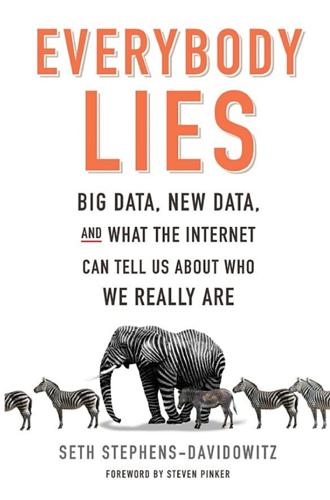
Everybody Lies: Big Data, New Data, and What the Internet Can Tell Us About Who We Really Are
by
Seth Stephens-Davidowitz
Published 8 May 2017
But a danger of the data revolution is that, as more of our life is quantified, these proxy judgments can get more esoteric yet more intrusive. Better prediction can lead to subtler and more nefarious discrimination. Better data can also lead to another form of discrimination, what economists call price discrimination. Businesses are often trying to figure out what price they should charge for goods or services. Ideally they want to charge customers the maximum they are willing to pay. This way, they will extract the maximum possible profit. Most businesses usually end up picking one price that everyone pays.
…
But sometimes they are aware that the members of a certain group will, on average, pay more. This is why movie theaters charge more to middle-aged customers—at the height of their earning power—than to students or senior citizens and why airlines often charge more to last-minute purchasers. They price discriminate. Big Data may allow businesses to get substantially better at learning what customers are willing to pay—and thus gouging certain groups of people. Optimal Decisions Group was a pioneer in using data science to predict how much consumers are willing to pay for insurance. How did they do it?
…
See Jews anxiety data about, 18 and truth about sex, 123 AOL, and truth about sex, 117–18 AOL News, 143 art, real life as imitating, 190–97 Ashenfelter, Orley, 72–74 Asher, Sam, 202 Asians, and truth about hate and prejudice, 129 asking the right questions, 21–22 assassinations, 227–28 Atlantic magazine, 150–51, 152, 202 Australia, pregnancy in, 189 auto-complete, 110–11, 116 Avatar (movie), 221–22 Bakshy, Eytan, 144 Baltimore Ravens-New England Patriots games, 221, 222–24 baseball and influence of childhood experiences, 165–69, 165–66n, 171, 206 and overemphasis on measurability, 254–55 predicting a player’s future in, 197–200, 200n, 203 and science, 273 scouting for, 254–55 zooming in on, 165–69, 165–66n, 171, 197–200, 200n, 203 basketball pedigrees and, 67 predicting success in, 33–41, 67 and socioeconomic background, 34–41 Beane, Billy, 255 Beethoven, Ludwig von, zooming in on, 190–91 behavioral science, and digital revolution, 276, 279 Belushi, John, 185 Benson, Clark, 217 Berger, Jonah, 91–92 Bezos, Jeff, 203 bias implicit, 134 language as key to understanding, 74–76 omitted-variable, 208 subconscious, 132 See also hate; prejudice; race/racism Big Data and amount of information, 15, 21, 59, 171 and asking the right questions, 21–22 and causality experiments, 54, 240 definition of, 14, 15 and dimensionality, 246–52 and examples of searches, 15–16 and expansion of research methodology, 275–76 and finishing books, 283–84 future of, 279 Google searches as dominant source of, 60 honesty of, 53–54 importance/value of, 17–18, 29–33, 59, 240, 265, 283 limitations of, 20, 245, 254–55, 256 powers of, 15, 17, 22, 53–54, 59, 109, 171, 211, 257 and predicting what people will do in future, 198–200 as revolutionary, 17, 18–22, 30, 62, 76, 256, 274 as right data, 62 skeptics of, 17 and small data, 255–56 subsets in, 54 understanding of, 27–28 See also specific topic Bill & Melinda Gates Foundation, 255 Billings (Montana) Gazette, and words as data, 95 Bing (search engine), and Columbia University-Microsoft pancreatic cancer study, 28, 30 Black, Don, 137 Black Lives Matter, 12 Blink (Gladwell), 29–30 Bloodstock, Incardo, 64 bodies, as data, 62–74 Boehner, John, 160 Booking.com, 265 books conclusions to, 271–72, 279, 280–84 digitalizing, 77, 79 number of people who finish, 283–84 borrowing money, 257–61 Bosh, Chris, 37 Boston Globe, and A/B testing, 214–17 Boston Marathon (2013), 19 Boston Red Sox, 197–200 brain, Minsky study of, 273 Brazil, pregnancy in, 190 breasts, and truth about sex, 125, 126 Brin, Sergey, 60, 61, 62, 103 Britain, pregnancy in, 189 Bronx Science High School (New York City), 232, 237 Buffett, Warren, 239 Bullock, Sandra, 185 Bundy, Ted, 181 Bush, George W., 67 business and comparison shopping, 265 reviews of, 265 See also corporations butt, and truth about sex, 125–26 Calhoun, Jim, 39 Cambridge University, and Microsoft study about IQ of Facebook users, 261 cancer, predicting pancreatic, 28–29, 30 Capital in the 21st Century (Piketty), 283 casinos, and price discrimination, 263–65 causality A/B testing and, 209–21 and advertising, 221–25 and Big Data experiments, 54, 240 college and, 237–39 correlation distinguished from, 221–25 and ethics, 226 and monetary windfalls, 229 natural experiments and, 226–28 and power of Big Data, 54, 211 and randomized controlled experiments, 208–9 reverse, 208 and Stuyvesant High School study, 231–37, 240 Centers for Disease Control and Prevention, 57 Chabris, Christopher, 250 Chance, Zoë, 252–53 Chaplin, Charlie, 19 charitable giving, 106, 109 Chen, M.
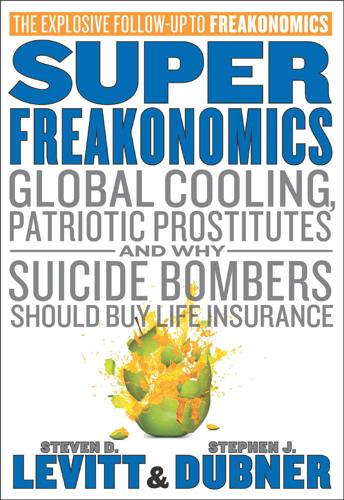
SuperFreakonomics
by
Steven D. Levitt
and
Stephen J. Dubner
Published 19 Oct 2009
Economists have a name for the practice of charging different prices for the same product: price discrimination. In the business world, it isn’t always possible to price-discriminate. At least two conditions must be met: Some customers must have clearly identifiable traits that place them in the willing-to-pay-more category. (As identifiable traits go, black or white skin is a pretty good one.) The seller must be able to prevent resale of the product, thereby destroying any arbitrage opportunities. (In the case of prostitution, resale is pretty much impossible.) If these circumstances can be met, most firms will profit from price discriminating whenever they can.
…
Leonard’s, which sells a Barber Magic hair trimmer for $12.99 and, elsewhere on its site, the Barber Magic Trim-a-Pet hair trimmer for $7.99. The two products appear to be identical—but Dr. Leonard seems to think that people will spend more to trim their own hair than their pet’s. How do the Chicago street prostitutes price-discriminate? As Venkatesh learned, they use different pricing strategies for white and black customers. When dealing with blacks, the prostitutes usually name the price outright to discourage any negotiation. (Venkatesh observed that black customers are more likely than whites to haggle—perhaps, he reasoned, because they’re more familiar with the neighborhood and therefore know the market better.)
…
She expected demand to fall, but it didn’t. So a few months later, she raised it to $400. Again, there was no discernible drop-off in demand. Allie was a bit peeved with herself. Plainly she had been charging too little the whole time. But at least she was able to strategically exploit her fee change by engaging in a little price discrimination. She grandfathered in her favorite clients at the old rate but told her less-favorite clients that an hour now cost $400—and if they balked, she had a handy excuse to cut them loose. There were always more where they came from. It wasn’t long before she raised her fee again, to $450 an hour, and a few months later to $500.
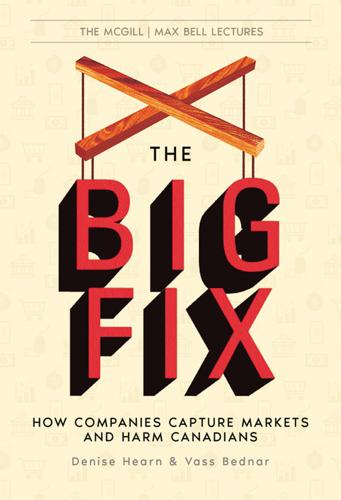
The Big Fix: How Companies Capture Markets and Harm Canadians
by
Denise Hearn
and
Vass Bednar
Published 14 Oct 2024
These stores do not receive volume discounts or rebates like other superstores that order products in massive quantities, meaning independent retailers have to buy products from their biggest retail competitors, often at a steeper cost.61 It’s a perverse world where the smaller your store, the more you pay to access the same product. In the United States, a 1936 law from the New Deal era called the Robinson-Patman Act aimed to prevent this kind of price discrimination between suppliers and retailers by making it illegal for a manufacturer to sell a product at different rates to different buyers.62 Canada has no similar law but should consider one. The rise of private label retail products, coupled with decades of mergers and acquisitions that have consolidated industries while retaining distinct brand names, are two ways in which companies create an illusion of rivalry.
…
In a 1935 Canadian Royal Commission on “price spreads,” the commission noted: “The results of such a system of delivered prices are injurious not only to the purchaser, because prices are almost inevitably higher than they would be under simple competition, but they give the combine or monopoly a means of price discrimination against which no small manufacturer can protect himself.”87 As the quote illustrates, commercial gatekeepers today don’t only control prices, but the very terms and conditions that other market actors must accept. They use the age-old techniques of blocking markets and tackling competitors to entrench themselves at the expense of fair, open markets. 3 Market Block and Tackle “Football is two things.
…
The former CEO of Safeway, Steve Burd, has said, “There’s going to come a point where our shelf pricing is pretty irrelevant because we can be so personalized in what we offer people.”232 Economists will say that this is simply an exercise in pricing optimisation. When companies offer different prices based on consumer willingness to pay, it can enhance market efficiency. It is true that not all price discrimination is inherently anti-competitive; it depends on context and impact. Discounted prices for seniors, students, and children, for example, are common and accepted. The key is discerning when pricing strategies cross the line from a savvy business practice to anti-competitive behaviour, a challenge that requires vigilant oversight and nuanced regulation.
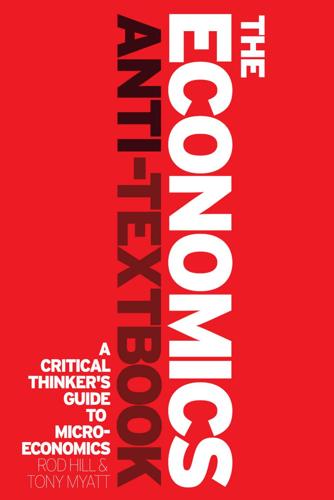
The Economics Anti-Textbook: A Critical Thinker's Guide to Microeconomics
by
Rod Hill
and
Anthony Myatt
Published 15 Mar 2010
Any price ceiling less than PC causes a shortage since it is below the point of intersection of demand and marginal cost. 125 6 | Market structure and efficiency Deadweight loss and price discrimination There is one interesting exception to the above conclusion: when a monopolist is able to perfectly discriminate among consumers on the basis of their willingness to pay, it produces the efficient amount, and deadweight loss is zero. Perfect price discrimination means that the monopolist is able to sell each unit at a different price, the maximum price given by the demand curve. In effect, the demand curve becomes the marginal revenue schedule, and the monopolist maximizes its profits by producing the competitive quantity at point A.
…
In effect, the demand curve becomes the marginal revenue schedule, and the monopolist maximizes its profits by producing the competitive quantity at point A. Because the monopolist converts the entire consumer surplus into extra profits, however, perfect price discrimination worsens the equity cost of monopoly. Perfect price discrimination is extremely rare because the monopolist doesn’t know the maximum amount each consumer would be willing to pay. Instead, the monopolist seeks ways to segregate the market into different groups – those willing to pay more versus those who will only pay less. For example, those with less income are willing to cut out coupons in newspaper flyers, or are willing to stay over an extra night to get a cheaper airline ticket.
…
For example, those with less income are willing to cut out coupons in newspaper flyers, or are willing to stay over an extra night to get a cheaper airline ticket. Similarly, we may think student (or senior) discounts are justified on equity grounds, though they too are attempts at price discrimination. Less than perfect price discrimination means that the monopolist will produce more than QM and less than QC in Figure 6.6. It lessens the deadweight loss but increases the equity cost of monopoly. The optimal price ceiling A sub-optimal price ceiling ∑MB i ∑MB i PM A PC PC PD D QM D QS QC QD Shortage figure 6.7 Price ceilings and monopoly The government’s policy options are more limited in the case of ‘natural monopoly’.

Artificial Unintelligence: How Computers Misunderstand the World
by
Meredith Broussard
Published 19 Apr 2018
This effort was a follow-up to a scandal in which it was discovered that MPs were using government funds to pay for household and office expenses. The Guardian team also gained expertise in using computational methods to analyze large troves of leaked documents, as in their analysis of the Afghanistan and Iraq war logs.12 One important project in the field is an investigation by the Wall Street Journal into price discrimination.13 Major chains like Staples and Home Depot were charging different prices on their websites depending on the zip code in which visitors seemed to be. The journalists used computational analysis tools to discover that customers in wealthier zip codes were being charged less than customers in poorer zip codes.
…
We’ve made more money for the insurance company, but we’ve not promoted the greatest good. These types of computational techniques are used for price optimization, or grouping customers into very small segments to offer different prices to different groups. Price optimization is used in industries from insurance to travel—and it often results in price discrimination. A 2017 analysis by ProPublica and Consumer Reports found that in California, Illinois, Texas, and Missouri, some major insurers charged people who lived in minority neighborhoods as much as 30 percent more than people who lived in other areas with similar accident costs.18 A 2014 analysis by the Wall Street Journal found that customers were being charged different prices for the same ordinary stapler on Staples.com.
…
I’ve omitted some parts of the tutorial for readability. 17. Quach, “Facebook Pulls Plug on Language-Inventing Chatbots?” 18. Angwin et al. “A World Apart.” 19. Valentino-DeVries, Singer-Vine, and Soltani, “Websites Vary Prices, Deals Based on Users’ Information.” 20. Hannak et al., “Measuring Price Discrimination and Steering on E-Commerce Web Sites.” 21. Heffernan, “Amazon’s Prime Suspect.” 22. Angwin, Mattu, and Larson, “Test Prep Is More Expensive—for Asian Students.” 23. Brewster and Lynn, “Black-White Earnings Gap among Restaurant Servers.” 24. Sharkey, “The Destructive Legacy of Housing Segregation.” 25.

Open for Business Harnessing the Power of Platform Ecosystems
by
Lauren Turner Claire
,
Laure Claire Reillier
and
Benoit Reillier
Published 14 Oct 2017
More advanced pricing methods allow firms to differentiate their pricing based on the ‘willingness to pay’ of various customer segments (or price elasticity, as discussed in Chapter 4). Being able to ‘price discriminate’, that is to say to set a price that is different from one customer group to another, often allows firms to increase revenues. This is because the propensity of one customer to pay can be higher than that of another. For example, if there is a unique market price for a product (say $10 for a game), then customers that would have been prepared to pay more (say $15) end up paying the lower market price and the difference ($5 in this case) is not captured by the seller. Price discrimination can be created at the customer level with unique prices (e.g. bespoke price for a given contract), at the segment level with prices for certain customer groups (e.g. student discounts) or even at the product level where slightly different versions of the product are priced very differently and marketed at different customer groups (e.g. economy vs business class airfares).
…
Jullien, ‘Chicken and Egg: Competition among Intermediation Service Providers’, RAND Journal of Economics, 34(2), 2003, 309–28, who departed from the payment cards industry to explore and model in more details the expected market equilibrium of competing platforms (including estate agents, dating agencies and marketplaces) under a range of scenarios. G. Parker and W. Van Alstyne, ‘Two-Sided Network Effects: A Theory of Information Product Design’, Management Science, 51(10), 2005, 1494–504, subsequently developed a model of ‘two sided network externality’ capturing network effects, price discrimination and product differentiation. Mark Armstrong, ‘Competition in Two-Sided Markets’, RAND Journal of Economics, 37(3), September 2006, 668–91, also proposed a model of multisided markets built upon similar theoretical foundations (but focused on membership externalities, as opposed to usage ones, as originally modelled by Rochet and Tirole) and offered a generic definition based primarily on the scale of the benefits derived by one side of the market depending upon the size of the other side.
…
For example, jobseekers can join the premium subscription model in order to have increased visibility of job offers, while established professionals can join a premium networking option where they will be able to see the identity of the people who viewed their profile. It is worth noting that a number of classified websites also use some form of price discrimination, depending on whether or not you are a business user and/or which section you want to place your adverts in. Gumtree, owned by eBay, offers free posts to private individuals in most second-hand goods sections, while businesses have to pay. In some sections of the site, such as property, all posters have to pay.
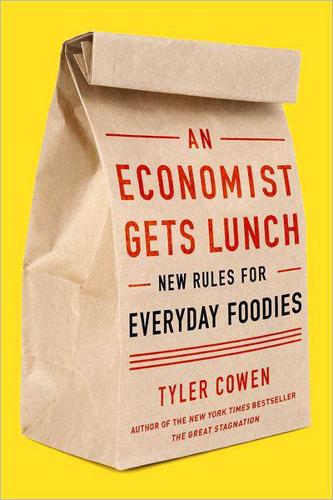
An Economist Gets Lunch: New Rules for Everyday Foodies
by
Tyler Cowen
Published 11 Apr 2012
From a business point of view that’s another relevant cost. If you love drinking, by all means pony up; but if your drink is just an impulse purchase, maybe give it a second thought. Is it really worth it? High prices for drinks are often a form of price discrimination, an economic term which refers to the extraction of additional money from the people willing to pay more for the product. For instance it’s price discrimination when a movie theater offers discounts to senior citizens. The cinema realizes that a certain group in their customer base (senior citizens) will see more of their movie offerings if they give them a special price.
…
On drink pricing and the use of table space, see John R. Lott Jr. and Russell D. Roberts, “A Guide to the Pitfalls of Identifying Price Discrimination,” Economic Inquiry, January 1991, vol. 29, no. 1, pp. 14–23. On the history of popcorn, see Andrew F. Smith, Popped Culture: A Social History of Popcorn in America (Columbia: University of South Carolina Press, 1999), pp. 102, 119–120, 159. For a study of the empirics of popcorn pricing, see Ricard Gil and Wesley Hartmann, “Empirical Analysis of Metering Price Discrimination: Evidence from Concession Sales at Movie Theaters,” working paper, 2008. For one look at the economics of movie distribution, see Peter Caranicas, “Studios at the Brink,” Variety Magazine, May 3–9, 2010, pp. 1, 70.
…
So if you like Coca-Cola at all, the time to get it is with Chinese food, when it is much cheaper and it is not being used to extract extra revenue from spendthrifts. More broadly, if the customers in a restaurant are elderly non-Americans from countries where Coke is a relatively recent innovation, the Coke is probably going to be cheap. That is to say, it won’t be a vehicle for price discrimination. Of course not every Chinese restaurant has cheap Coke, because not every Chinese restaurant is marketing its product toward traditional Chinese. If you go to a yuppie-oriented, socially oriented P.F. Chang’s, you’re back to the higher price for the soft drink. In my local China Star restaurant, which attracts a largely Chinese clientele, a Coke costs $1.00, circa 2010, with free refills.

Data and Goliath: The Hidden Battles to Collect Your Data and Control Your World
by
Bruce Schneier
Published 2 Mar 2015
The airline’s goal is to sell tickets to vacationers at the bargain prices they’re willing to pay, while at the same time extracting from business travelers the much higher amounts that they’re willing to pay. There is nothing nefarious about the practice; it’s just a way of maximizing revenues and profits. Even so, price discrimination can be very unpopular. Raising the price of snow shovels after a snowstorm, for example, is considered price-gouging. This is why it is often cloaked in things like special offers, coupons, or rebates. Some types of price discrimination are illegal. For example, a restaurant cannot charge different prices depending on the gender or race of the customer. But it can charge different prices based on time of day, which is why you see lunch and dinner menus with the same items and different prices.
…
Because corporations collect so much data about us and can compile such detailed profiles, they can influence us in many different ways. A 2014 White House report on big data concluded, “… big data analytics have the potential to eclipse longstanding civil rights protections in how personal information is used in housing, credit, employment, health, education, and the marketplace.” I think the report understated the risk. Price discrimination is also a big deal these days. It’s not discrimination in the same classic racial or gender sense as weblining; it’s companies charging different people different prices to realize as much profit as possible. We’re most familiar with this concept with respect to airline tickets. Prices change all the time, and depend on factors like how far in advance we purchase, what days we’re traveling, and how full the flight is.
…
But it can charge different prices based on time of day, which is why you see lunch and dinner menus with the same items and different prices. Offering senior discounts and special children’s menus is legal price discrimination. Uber’s surge pricing is also legal. In many industries, the options you’re offered, the price you pay, and the service you receive depend on information about you: bank loans, auto insurance, credit cards, and so on. Internet surveillance facilitates a fine-tuning of this practice. Online merchants already show you different prices and options based on your history and what they know about you. Depending on who you are, you might see a picture of a red convertible or a picture of a minivan in online car ads, and be offered different options for financing and discounting when you visit dealer websites.
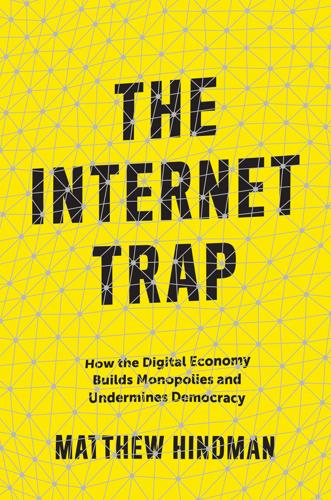
The Internet Trap: How the Digital Economy Builds Monopolies and Undermines Democracy
by
Matthew Hindman
Published 24 Sep 2018
This example is loosely adapted from Shapiro and Varian, 1998; see also a similar example of bundling in Hamilton, 2004. of content into a single product. What’s true in print is also true for goods like cable television, which is almost always bought as a bundle or series of bundles. Bundling works, in part, because it serves as a form of price discrimination. Companies would love to charge people different prices for the same exact product—ideally, as much as each consumer is willing and able to pay. Bundling takes advantage of the law of averages. It is easier to guess what a consumer is willing to pay for the package deal—for all of Microsoft Office, or all of the Wall Street Journal—than it is to guess what she might pay for the individual parts.
…
As the traffic numbers discussed earlier suggest, most newspaper site-users visit just a few times a month. More than 90 percent of site visitors never hit the paywall in the first place. Metered paywalls thus ask for Making News Stickier • 139 subscription revenue only from heavier users. Paywalls allow newspapers to perform price discrimination—to figure out which users are most willing to pay, and then ask that group alone to pony up. But while metered paywalls provide a better series of trade-offs than hard paywalls, they are not a free lunch. The biggest cost of paywalls lies in lower traffic. This lost traffic doesn’t manifest as a one-time drop.
…
and, 1, 3 auctions, 3, 42, 86, 101 audience reach: attention economy and, 11–14; categories of content and, 165; churn and, 9, 84–85, 88–95, 100–101, 163–64, 167; compounded, 133; Darwinism and, 13, 136, 165–67, 169, 203n9; distribution of, 6, 12–13, 84–85, 88–100, 112, 114, 155, 167–69, 171, 179, 185; evolutionary model and, 164–67; false solutions and, 137–46; growth patterns in, 84, 88, 91, 95–96, 100; headlines and, 13, 32, 36, 38, 107, 147, 149–50, 154–57, 160–61; logarithms and, 88–96, 97, 100, 184–86; methodology and, 184–92; mobile devices and, 2–4, 13, 39, 69, 109, 137, 142–44, 147, 152, 160, 165, 167, 170, 179; nature of internet and, 162–80; news and, 104–18, 121–22, 126–30, 133–39, 142–49, 152, 154, 157–61, 169; overlap and, 67, 76–77, 108, 110; paywalls and, 132, 137–40, 147, 160; public sphere and, 10–11, 13–14, 99, 169; rankings and, 7, 25, 31, 54, 84–96, 100, 110–12, 136, 157, 186; recommendation systems and, 60 (see also recommendation systems); stability and, 165; traffic and, 83–96, 99–101, 104–11, 114–18, 121, 129, 134, 169, 186–89; unique visitors and, 87–88, 106–11, 128, 134 AWS, 153, 168, 203n28 Ayres, Ian, 3 Bagdikian, Benjamin, 171 Bai, Matt, 7 Bankler, Yochai, 12, 170 Banko, Michele, 51 Bank of America, 9 Barlow, John Perry, 162–63, 176 BBC, 32 Beam, Christopher, 35 behavioral targeting, 55–58 Being Digital (Negroponte), 38 Bell, Robert, 44–49 bell curve, 92–93, 95 BellKor, 44–49 Bellman, Steven, 34 Bell Telephone, 16–17 Berners-Lee, Tim, 3 Bezos, Jeff, 72, 139, 147, 150 Bieschke, Eric, 38 BigChaos, 47 BigTable, 21, 23 Bing: attention economy and, 3; economic geography and, 79; Experimentation System and, 28; experiments and, 24–25, 28, 31; market share of, 3, 30–31, 195n63; nature of internet and, 174; news and, 32, 61, 134; page views and, 24; revenue and, 24, 31, 70; tilted playing field and, 24, 28, 30–32 “Bing It On” (Microsoft campaign), 31 black box problem, 52 blogs: attention economy and, 7–9, 13; Darwinism and, 136; economic geography and, 77; methodology and, 189; nature of internet and, 169; news and, 121, 133, 136–37, 155–56, 159; personalization and, Index 45, 50; political, 136; tilted playing field and, 17, 25, 35; Webb and, 45 Boczkowski, Pablo, 70–71 Borg, 21, 23 Boston, 113–14 Bosworth, Andrew, 162 Bowman, Douglas, 25 Box, George, 64 Bradshaw, Samantha, 177 Branch, John, 152 Brand, Stewart, 164 branding, 28–32, 36, 86, 166 Brexit, 58 Brill, Eric, 51 Broadband penetration, 124, 126, 190 browsers, 2, 24–25, 34, 107, 143, 175, 195n63 budget constraints, 72, 181 Buffet, Warren, 102 bundling, 65–67, 76–77, 197n8, 198n10, 198n14 Buzzfeed, 137, 145, 149–51, 159–60, 168 Caffeine, 21, 23 Cambridge Analytica, 40, 58, 59 Campus Network, 35–36 capitalism, 20, 85, 162, 176 Census Bureau, 190 Center for Public Integrity, 140 Chancellor, Joseph, 58 Chandler, Alfred, 20 Chartbeat, 107, 149, 153 Chicago, 113, 141 China, 80, 177–78, 193n5 Christie’s, 42 Chrome, 24–25, 145 churn, 9, 84–85, 88–95, 100–1, 163–64, 167 Chyri, Iris, 130 CineMatch, 43–44, 46, 50 Clauset, Aaron, 184 clickbait, 150 click-through rates, 56–57 cloud computing, 34, 153–54, 168, 203n28 CNN, 9, 32, 39, 72, 107, 159 Colossus, 21, 23 Columbia Journalism Review, 119, 148 Comcast, 172 comment systems, 19 comparative advantage, 62–63, 80, 82 • 227 competition: attention economy and, 1, 3–4, 6, 9, 11, 13, 165–66; bundling and, 67; economic geography and, 64, 67, 74, 78; nature of internet and, 164–70, 173–75; news and, 104, 114–15, 135, 137, 146, 149, 159, 164–70, 173–75; personalization and, 40; political economy and, 40–53, 60; search engines and, 1; social networks and, 35–36; tilted playing field and, 16–17, 21–22, 26–37; traffic and, 83, 86–87, 101 comScore: attention economy and, 10; nature of internet and, 187–88; news and, 104–10, 113, 116, 119–22, 127, 128–29; traffic and, 87, 199n19 concentration: attention economy and, 2–9, 13; dispersion and, 6, 42, 100, 200n23; economic geography and, 63–64, 68, 78, 80–81; forces of, 5–8, 19, 30, 61, 64, 80, 184; lopsided understanding of internet and, 5–8; markets and, 9, 30, 68, 78, 85–88, 99–100, 104, 114–15, 122, 127–30, 171, 184, 199n15; methodology and, 184; nature of internet and, 164, 171–72, 179; news and, 104, 114–15, 122, 126–28, 130, 134; personalization and, 39, 61; revenue and, 2–4, 8, 68, 171, 179; tilted playing field and, 19, 30, 32; traffic and, 7–8, 30, 32, 63, 83–88, 96, 99–101, 104, 122, 171, 199n15 Congress, 104, 141–42 conservatives, 32, 48, 69, 72, 75, 131, 175 consumption: attention economy and, 6, 10; branding and, 28–32, 36, 86, 166; bundling and, 65–67, 76–77, 197n8, 198n10, 198n14; digital content production and, 71–80; economic geography and, 63–68, 70–76, 79; experience goods and, 29–30; methodology and, 181–84; models and, 181–84; nature of internet and, 164–65, 168, 172–75; news and, 110, 113, 122, 125–29, 143, 149; personalization and, 42–43, 50, 57–58; preferences and, 5, 8, 32, 43, 54, 63–65, 69–81, 181–84, 198n41; price discrimination and, 66, 139; switching costs and, 8, 34, 63, 72, 78–79, 164; tilted playing field and, 17, 22–26, 29–34, 37; traffic and, 86; unique visitors and, 87–88, 106–11, 128, 134 cookies, 107 cost per thousand impressions (CPM), 69 court system, 6, 129, 148 creative destruction, 84, 167 228 • Index CSS, 143 CU Community, 35–36 DailyKos, 75 Daily Me, The, 38–39, 61 Daily You, The (Turow), 39 Dallas Morning News, 118 dark fiber, 21 Darwinism, 13, 136, 165–67, 169, 203n9 data centers, 2, 12, 15–16, 20–23, 54 data mining, 59, 135 data packets, 22, 171 “Declaration of the Independence of Cyberspace, A” (Barlow), 162–63 deep learning, 21 DeepMind, 23, 194n24 democracy, 7, 70, 103–4, 163, 175–78, 180 DeNardis, Laura, 171 Department of Justice, 115, 130 Des Moines Register, 136 Detroit, 83 digital content production model, 71–80 Dinosaur Planet, 46–47, 49 disinformation, 177–78 dispersion, 6, 42, 100, 200n23 distribution costs, 12–13, 155, 167–69, 179 diversity: economic geography and, 8, 63–64, 79; methodology and, 189, 191; nature of internet and, 180; news and, 104–5, 115, 118, 129–30, 149; personalization and, 53, 60–61 DNAinfo, 141 Dremel, 27 Duarte, Matias, 27 duopolies, 4, 30, 42, 68, 180 Earl, Jennifer, 169 Easterbrook, Frank, 175 eBay, 3, 26, 39, 42, 86–87, 175 economic geography: advertising and, 3–4, 63, 67–69, 80; agglomeration and, 9, 63, 82–83; aggregation and, 65–67, 76–77; Apple and, 79–80; apps and, 80; auctions and, 3, 42, 86, 101; audience reach and, 87, 104, 106–11, 114–18, 121, 129, 134, 169, 186–89; Bing and, 79; blogs and, 77; bundling and, 65–67, 76–77, 197n8, 198n10, 198n14; comparative advantage and, 62–63, 80; competition and, 64, 67, 74, 78; concentration and, 63–64, 68, 78, 80–81; consumption and, 63–67, 70–76, 79; customers and, 17, 24, 30, 33, 50, 57, 68, 149, 164, 172, 174; digital content production and, 71–80; dispersion and, 6, 42, 100, 200n23; distribution costs and, 12–13, 155, 167–69, 179; diversity and, 8, 63–64, 79; economies of scale and, 63–67, 74, 76, 79, 81; efficiency and, 63, 65, 67–68; Facebook and, 68, 79–80; Google and, 68–69, 79–80; government subsidies and, 133, 137, 140–42; hyperlocal sites and, 68, 77–78, 81, 101–4, 119, 121, 130–37, 164, 180; increasing returns and, 36–37, 63–64, 80–81, 181, 184; international trade and, 5, 62, 80; investment and, 73; journalism and, 78, 81; Krugman and, 6, 62–63, 80; lock-in and, 34–37, 61, 101, 173; long tails and, 8, 70, 84, 184, 199n15; markets and, 63–68, 74–75, 77–78; media preferences and, 69–71; Microsoft and, 65–66; models and, 63–65, 69–81, 198n27, 198n41; Netflix and, 70; networks and, 68–69; news and, 65–80; newspapers and, 65, 68–69, 78; page views and, 24, 87, 106, 108–18, 121, 125–29, 151, 157, 160–61, 188–89, 200n18; paywalls and, 107, 109, 132, 137–40, 147, 160; preferences and, 5, 8, 32, 43, 54, 63–65, 69–81, 181–84, 198n41; profit and, 73–77, 81; protectionism and, 174; quality and, 72–78, 81, 83–84; revenue and, 63, 65–68, 73–75, 79; search costs and, 8, 30, 34, 37, 41–43, 63, 72–74, 168, 181–82; search engines and, 64, 79–81; software and, 65–66; stickiness and, 74; subscriptions and, 65, 67; television and, 66, 70; traffic and, 63, 77–81; video and, 69, 76; Yahoo!
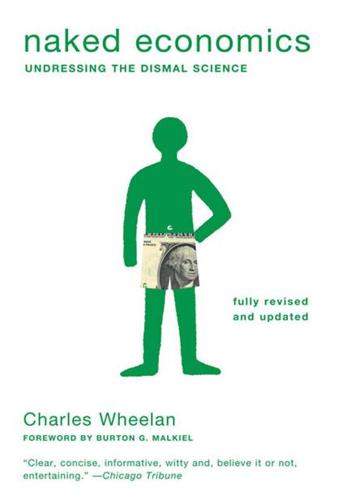
Naked Economics: Undressing the Dismal Science (Fully Revised and Updated)
by
Charles Wheelan
Published 18 Apr 2010
These countries will never be able to pay the high prices charged in the developed world, so the companies would not be forgoing profits by selling the drugs cheaply. In places like South Africa, it’s either cheap drugs or no drugs. This would appear to be a perfect opportunity for price discrimination: Make the drugs cheap in Cape Town and expensive in New York. True, price discrimination could create an opportunity for a black market; drugs sold cheaply in Africa could be resold illegally at high prices in New York. But that seems a manageable problem relative to the huge public relations cost of denying important drugs to large swathes of the world’s population
…
The marketing executives may err either way: They may underprice the items, in which case they will sell out; or they may overprice the items, in which case they will have a warehouse full of sweatshirts. Actually, there is another option. A firm can attempt to sell the same item to different people at different prices. (The fancy name is “price discrimination.”) The next time you are on an airplane, try this experiment: Ask the person next to you how much he or she paid for the ticket. It’s probably not what you paid; it may not even be close. You are sitting on the same plane, traveling to the same destination, eating the same peanuts—yet the prices you and your row mate paid for your tickets may not even have the same number of digits.
…
Pleasure travelers usually spend the weekend at their destination, while business travelers almost never do. Buying the ticket two weeks ahead of time will be much, much cheaper than buying it eleven minutes before the flight leaves. Vacationers plan ahead while business travelers tend to buy tickets at the last minute. Airlines are the most obvious example of price discrimination, but look around and you will start to see it everywhere. Al Gore complained during the 2000 presidential campaign that his mother and his dog were taking the same arthritis medication but that his mother paid much more for her prescription. Never mind that he made up the story after reading about the pricing disparity between humans and canines.

The AI-First Company
by
Ash Fontana
Published 4 May 2021
Lower prices, leveraging the gains from automation to pursue the following and thus be in a favorable position to beat competitors in existing markets or enter new markets: price discrimination; disruption; and aggregation. AGGREGATING ADVANTAGES This chapter walks through the five strategies at the top of the diagram above—vertical integration, positioning through standardization, data aggregation, disruptive market entry, or price discrimination based on data contribution—that generate more data to feed models, grow the DLE, and attract more customers. Managers can either distribute these profits to shareholders or reinvest in business, technology, or strategies to further grow the DLE.
…
Customers, in this case, need an interface through which to receive the predictions and training to understand how to use that interface, which may cost an extra $1 to build and deliver. Customers can get a lot of value out of the predictions and pay $5 for something that costs $1.50 to deliver—a 70 percent gross margin. Ascending the pyramid of vertical integration is a profitable move for the AI-First vendor. PRICE DISCRIMINATION Figuring out what to charge customers is a perpetual challenge, and one that revolves around aligning perception of value with reality. Pricing provides an indication of differentiation, as customers will pay a lot for something they can’t get anywhere else. Pricing strategy involves considerations of revenue quality, growth, profitability, product, marketing, and sales.
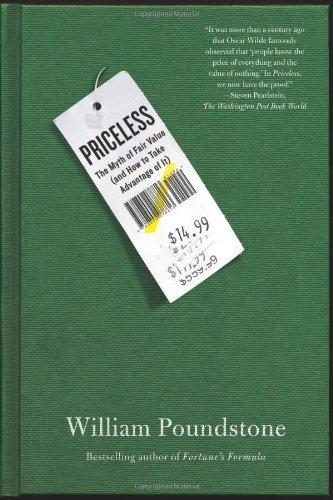
Priceless: The Myth of Fair Value (And How to Take Advantage of It)
by
William Poundstone
Published 1 Jan 2010
Ayres and Siegelman’s results occasioned much indignation in the media. Evidence of price discrimination is a complicated thing, though, difficult to reduce to a sound bite. As Ayres pointed out, his results did not necessarily imply what many were assuming—that dealers were prejudiced and wanted to exploit blacks and women. The dealers often steered the volunteers to salespeople of their own race and gender “who then proceeded to give them the worst deals.” Blacks actually got better deals from white dealers, and women got better deals from men. In 1996 Pinelopi Koujianou Goldberg published another price discrimination study that appeared to overturn any conclusions drawn from Ayres and Siegelman.
…
Therefore, they quoted many high initial prices to minorities (in Ayres-Siegelman). Buyers quoted a high initial price tended to bargain longer and harder than buyers quoted a good price. This erased most of the evidence of racial and gender bias (in Goldberg). If nothing else, this shows how complex price discrimination can be. It’s possible that some dealers weren’t even aware of a sucker theory. Their price quotes may have been statistically biased by race and gender without any conscious intention. Ayres found that one bit of information was worth $319 to buyers across genders and races. Volunteers who said they had already taken a test drive paid an average of $319 less than those who didn’t, and this was statistically significant.
…
Psychological Review 103, 592–96. Ginzberg, Eli (1936). “Customary Prices.” The American Economic Review 26, 296. Glanz, James, and Eric Lipton (2003). City in the Sky: The Rise and Fall of the World Trade Center. New York: Times Books / Henry Holt. Goldberg, Pinelopi Koujianou (1996). “Dealer Price Discrimination in New Car Purchases: Evidence from the Consumer Expenditure Survey.” Journal of Political Economy 104, 622–54. Goldstein, William M., and Hillel J. Einhorn (1987). “Expression Theory and the Preference Reversal Phenomena.” Psychological Review 94, 236–54. Goodman, Barbara, Mark Saltzman, Ward Edwards, and David H.

The Finance Book: Understand the Numbers Even if You're Not a Finance Professional
by
Stuart Warner
and
Si Hussain
Published 20 Apr 2017
It is important to understand the difference between these methods. In practice, confusion between these terms may lead to under-pricing, for example, if managers use margins and price setters use mark-ups. Optional detail Price customisation Technology has enabled price customisation (a.k.a. ‘dynamic pricing’ or ‘demand yield’ pricing or price discrimination), i.e. setting different prices for different customers based on their relative perceptions of value. For example, airline prices change according to the availability of seats, seasonal demand, the actual time of the flight, the number of days before departure and competitor pricing. It is possible for prices to change several times in one day.
…
An extract follows: The Journal identified several companies, including Staples, Discover Financial Services, Rosetta Stone Inc. and Home Depot Inc., that were consistently adjusting prices and displaying different product offers based on a range of characteristics that could be discovered about the user. Office Depot, for example, told the Journal that it uses ‘customers’ browsing history and geolocation’ to vary the offers and products it displays to a visitor to its site. Ethical pricing Price customisation is effectively price discrimination; however, there is nothing illegal about offering different prices to different customers. As The Wall Street Journal noted in its above article: ‘Nobody is surprised if, say, a gallon of gas is cheaper at the same chain, one town over.’ Despite being legal, a business needs to be careful that its pricing is and is seen to be ethical.
…
Pre-emption rights Rights protecting existing shareholders against dilution of their percentage shareholding in a company. Prepayments Goods or services which have been invoiced and paid, but not yet received. Also known as deferred expense. Price customisation Setting different prices for different customers based on their relative perceptions of value. Also known as ‘dynamic’ or ‘demand yield’ pricing or price discrimination. Private equity Funds typically used to ‘buy out’ shareholders of existing companies rather than providing a source of new finance for companies. Provision A known yet imprecise liability. A present obligation as a result of a past event where payment is probable and the amount can be reliably estimated.

Applied Artificial Intelligence: A Handbook for Business Leaders
by
Mariya Yao
,
Adelyn Zhou
and
Marlene Jia
Published 1 Jun 2018
One of her important contributions illuminates discrimination in online advertising, where she discovered that online searches of names that are more associated with the black community are 25 percent more likely to be targeted by ads that implies the person being searched for has a criminal record.(32) Sweeney also uncovered SAT test prep services that charge zip codes with high proportions of Asian residents nearly double the average rate, regardless of their actual income.(33) While price discrimination based on race, religion, nationality, or gender is illegal in the United States, enforcement of existing law is challenging in e-commerce, where the evidence of differential pricing is obscured by opaque algorithms. In healthcare, AI systems are at risk of producing unreliable insights even when algorithms are perfectly implemented, because the availability of medical data is affected by social inequality.
…
Retrieved from http://www.nytimes.com/2016/06/26/opinion/sunday/artificial-intelligences-white-guyproblem.html (32) Sweeney, L. (2013, May). Discrimination in online ad delivery. Communications of the ACM, 56(5), 44-54. doi:10.1145/2447976.2447990 (33) Vafa, K., Haigh, C., Leung, A., & Yonack, N. (2015, September 1). Price Discrimination in The Princeton Review’s Online SAT Tutoring Service. Technology Science. Retrieved from https://techscience.org/a/2015090102/ (34) Hart, R. (2017, July 10). If you’re not a white male, artificial intelligence’s use in healthcare could be dangerous. Quartz. Retrieved from http:// qz.com/1023448/ (35) Brundage, M., et al. (2018, February), The Malicious Use of Artificial Intelligence: Forecasting, Prevention, and Mitigation.

When to Rob a Bank: ...And 131 More Warped Suggestions and Well-Intended Rants
by
Steven D. Levitt
and
Stephen J. Dubner
Published 4 May 2015
Why on earth, I asked Wolf, would anyone pay $100 extra—probably every month—to fill a prescription at Walgreens instead of Costco? His answer: if a retiree is used to filling his prescriptions at Walgreens, that’s where he fills his prescriptions, and he assumes that the price of a generic drug (or, perhaps, any drug) is pretty much the same at any pharmacy. Talk about information asymmetry; talk about price discrimination! I had meant to write about this, and had collected a few relevant links: a TV news report in Houston about Wolf’s discovery; an extensive price comparison compiled by a TV news reporter in Detroit; a Consumer Reports survey; and a research report on the subject from Senator Dianne Feinstein.
…
Green innovations can be featured in advertising campaigns to attract customers. Another potential benefit of “going green” is that it makes environmentally minded employees happy, increasing their loyalty to the firm. A Berlin brothel has hit on another way to use environmental arguments to its benefit: price discrimination. As Mary MacPherson Lane writes in an AP article: The bordellos in the capital of Germany, where prostitution is legal, have seen business suffer with the global financial crisis. Patrons have become more frugal and there are fewer potential customers coming to the city for business trips and conferences.
…
To qualify, customers must show the receptionist either a bicycle padlock key or proof they used public transit to get to the neighborhood. That knocks the price for 45 minutes in a room, for example, to euro 65 from euro 70. Although the brothel says the reason for the price discount is that it wants to be environmentally conscious, it sure looks to me like the brothel is dressing up some good old-fashioned price discrimination arguments in a green disguise. Customers who come by bus or bicycle are likely to have lower incomes and be more price-sensitive than those who arrive by car. If that is the case, the brothel would like to charge such customers lower prices than the richer ones. The difficulty is that, without a justifiable rationale, the rich customers would be angry if the brothel tried to charge them more (and indeed, how in general, would the brothel know who is rich?).

Big Business: A Love Letter to an American Anti-Hero
by
Tyler Cowen
Published 8 Apr 2019
You can wait until your Texas trips to order barbecue, for instance, if you don’t like what is in your local area. Or order some new suits during your next trip to Hong Kong. This kind of cross-border arbitrage was much harder a few decades ago. The current domestic retail environment does seem to involve more price discrimination than in the past, largely because companies have become more adept with data. So the same company will sell some pretty similar clothes to varying classes of buyers at differing prices, sometimes wildly differing prices. That means greater bargains for those who take the time to search at the local Neiman Marcus outlet or who have the facility for effective, well-informed web searches, and perhaps higher prices for individuals who just go to the mall and automatically buy the first item they see that fits their needs (that is me, if you are wondering).
…
That state of affairs does not benefit everyone, but it is hardly rampant monopolization. Furthermore, a disproportionate share of the gains accrues to the people who have more time and inclination to search, the people who take greater care to patronize outlet malls and cheap clothing stores, and the people who don’t just walk into Nordstrom and pick up a suit off the rack. Price discrimination is usually an egalitarian development. I do also see that in the core of retail markets, the winner-take-all phenomenon may be going up; for instance, the top four brands on average accounted for 15 percent of the market in 1982 but 30 percent of the market in 2012. Some leading firms have the ability and intent to launch well-known national brands backed by extensive marketing and product development, and the other, smaller firms cannot match their pace.
…
outsourcing overhead overprescription of drugs Page, Benjamin PayPal Pearlstein, Steven personality personalization Pfeffer, Jeffrey Pfizer Pillsbury Doughboy Pinterest PNC poverty prices bulk purchasing and competition and differing government and higher prices inflation and information technology and low prices loyalty programs and monopoly and online shopping and price discrimination price fixing price-gouging price-to-earnings ratios quality and resale price maintenance (RPM) and super-low talent and trust and See also subsidies prison-industrial complex privacy Facebook and Google and loss of private equity investment private sector Procter & Gamble productivity profit airline industry big business and CEOs and competition and ethics and financial sector and Friedman on loyalty programs and maximization monopoly and nonprofits vs.

The Limits of the Market: The Pendulum Between Government and Market
by
Paul de Grauwe
and
Anna Asbury
Published 12 Mar 2017
My feelings about Eurostar are very mixed. On the one hand I appreciate the convenience and comfort with which I race through the Channel each week, arriving at my destination in the minimum time. On the other hand I curse Eurostar each month when ordering my tickets on their website. Why? Eurostar applies the principle of price discrimination. This is a technique which companies with a monopoly apply to maximize their profits, consisting of looking at signals which betray consumers’ willingness to pay. Airlines apply the same method. The greater the willingness to pay, the higher the price the company will charge. In many cases, however, it is difficult or even impossible to ascertain an individual’s willingness to pay.
…
b, , –, Poland labour costs, gross hourly f Polanyi, K. , – political systems, inclusive and exclusive, open and closed – political unions European Union pollution , – Portugal eurozone government bond spreads, ten-year f government bonds labour costs, gross hourly f poverty , , , and inequality – price discrimination –b mechanism private goods private interests , , privatization production INDEX production (Continued) and excess capacity material b, – productivity growth and saturation labour costs and public sector –, profits , progressive wealth tax property rights , public goods –, , , – public harm –, public sector , –, b purchasing power –, quantitative restrictions rationality private and collective see also individual rationality and collective rationality real estate and collective movements – prices redistribution , – at expense of efficiency – governments, role of – income policy – reformist scenario – regulations, increased in banking and financial sectors Reinhart, C. rentiers –, return (after tax) on capital (r) and growth in GDP (g) in the world –, f, , t Robinson, J. Rogoff, K. Romania immigration from labour costs, gross hourly f Roosevelt, F. Rousseau, J.
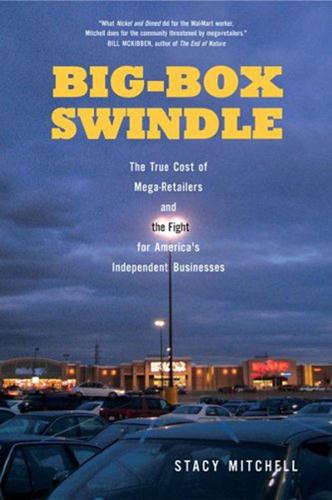
Stacy Mitchell
by
Big-Box Swindle The True Cost of Mega-Retailers
and
the Fight for America's Independent Businesses (2006)
Although evidence linked declining sales at Inkwood and the other stores to discriminatory pricing, Orrick ruled in a pivotal pretrial decision that UNCLE SAM’S INVISIBLE HAND 187 expert testimony had not completely ruled out every other possible cause for the revenue losses. The decision meant that the ABA could seek only an injunction, not damages. This had two crucial consequences: the case would be tried by a judge instead of a jury, and the focus would be on the chains’ current practices, rather than the evidence of price discrimination going back to 1994 that the ABA had gathered. By the time of the trial, the special discounts and discriminatory terms had lessened considerably, largely as a result of the lawsuit. The ABA felt that Orrick’s ruling was reversible on appeal—it set an exceptionally high bar that was inconsistent with other federal courts—but an appeal would have required several more years of litigation and the group had already spent $18 million on the case.57 Instead the ABA pursued a settlement.
…
Campbell Jr. of the National Grocers Association before the Antitrust Modernization Commission on July 28, 2005; Mikva was quoted in David Balto, “In Defense of Robinson-Patman: In Defense of Small Business,” Legal Times, Oct. 13, 1997, 23. 52. The courts have opted to subject certain kinds of Robinson-Patman Act cases, known as primary-line cases, to the standards of Brooke Group. Primaryline cases involve price discrimination that injures other sellers, as opposed to secondary-line cases, in which the ones injured are competing buyers. Because injury to small buyers (local retailers) is the issue here, secondary-line cases are the focus of this discussion. Foer, “Small Business and Antitrust”; William H. Borghesani, Peter L. de la Cruz, and David B.
…
Foer, Half-Time at the Antitrust Modernization Commission (Washington, D.C.: American Antitrust Institute, Dec. 1, 2005); Foer interview. 62. “Interchange Rate Future in U.S. Is Up for Grabs,” Electronic Payments Week, Mar. 29, 2005. 63. John B. Kirkwood, “Buyer Power and Exclusionary Conduct: Should Brooke Group Set the Standards for Buyer-Induced Price Discrimination and Predatory Bidding?” Antitrust Law Journal 72, no. 2 (2005); John Kirkwood, interview, Jan. 5, 2006; “The Robinson-Patman Act Should Be Reformed, Not Repealed,” testimony submitted to the AMC by the American Antitrust Institute Working Group on the Robinson-Patman Act, July 1, 2005. 64.

Big Data and the Welfare State: How the Information Revolution Threatens Social Solidarity
by
Torben Iversen
and
Philipp Rehm
Published 18 May 2022
In this case, the analysis is indistinguishable from the asymmetric information case in Figure 2.1: adverse selection will undermine markets. One example is the US Genetic Information Nondiscrimination Act of 2008 (GINA), which prohibits health insurers from using individuals’ genetic information to price discriminate against otherwise healthy individuals. It does not, however, prohibit such discrimination in life insurance, disability insurance, and long-term care insurance markets, at least in most US states (states have considerable discretion in the regulation of insurance). Nor does it apply to nongenetic information.
…
In this case, the analysis is indistinguishable from the asymmetric information case in Figure 2.1: adverse selection will undermine markets. One example is the US Genetic Information Nondiscrimination Act of 2008 (GINA), which prohibits health insurers from using individuals’ genetic information to price discriminate against otherwise healthy individuals. It does not, however, prohibit such discrimination in life insurance, disability insurance, and long-term care insurance markets, at least in most US states (states have considerable discretion in the regulation of insurance). Nor does it apply to nongenetic information.
…
In this case, the analysis is indistinguishable from the asymmetric information case in Figure 2.1: adverse selection will undermine markets. One example is the US Genetic Information Nondiscrimination Act of 2008 (GINA), which prohibits health insurers from using individuals’ genetic information to price discriminate against otherwise healthy individuals. It does not, however, prohibit such discrimination in life insurance, disability insurance, and long-term care insurance markets, at least in most US states (states have considerable discretion in the regulation of insurance). Nor does it apply to nongenetic information.

The Undercover Economist: Exposing Why the Rich Are Rich, the Poor Are Poor, and Why You Can Never Buy a Decent Used Car
by
Tim Harford
Published 15 Mar 2006
(New York: W. W. Norton, 1997) covers the subject extensively, including the quotation about French railroads, which comes from Emile Dupuit, an eighteenth-century French economist, translated by R. B. Ekelund, “Price Discrimination and Product Differentiation in Economic Theory: An Early Analysis,” Quarterly Journal of Economics 84 (1970): 268–78. The amazing stories of price discrimination in hi-tech goods are from Hal Varian and Carl Shapiro, Information Rules (Cambridge, MA: Harvard Business School Press, 1999), 59. I learned why popcorn costs so much at the movies by reading Steven Landsburg’s Armchair Economist (New York: Free Press, 1993), and why wine costs so much at restaurants in discussion with my former colleague Bill Sjostrom.
…
• 35 • T H E U N D E R C O V E R E C O N O M I S T There’s one born every minute: Two ways to find him There are three common strategies for finding customers who are cavalier about price. Let’s cover two for now, and leave the best for last. The first is what economists call “first degree price discrimination,” but we could call it the “unique target” strategy: to evaluate each customer as an individual and charge according to how much he or she is willing to pay. This is the strategy of the used-car salesman or the real estate agent. It usually takes skill and a lot of effort; hardly surprising, then, that it is most often seen for items that have a high value relative to the retailer’s time—cars and houses, of course, but also souvenirs in African street stalls, where the impoverished merchant will find it worth bargaining for some time to gain an extra dollar.
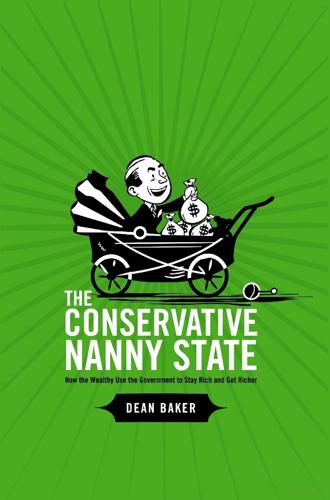
The Conservative Nanny State: How the Wealthy Use the Government to Stay Rich and Get Richer
by
Dean Baker
Published 15 Jul 2006
The incentives created by copyright monopolies encourage textbook publishers to constantly adapt their books to persuade faculty to use new editions, even when the research in the area provides little reason to change a textbook. This quickly makes used editions obsolete. In addition, textbook publishers practice the same sort of price discrimination as pharmaceutical companies, charging lower prices in Europe and developing countries than they do in the United States. To preserve this type of price discrimination, the textbook publishers, like the drug companies, rely on the nanny state to police their marketing arrangements. They want the government to arrest people who sell their books at the wrong price in the wrong place, since large price differences cannot persist in a truly free market.
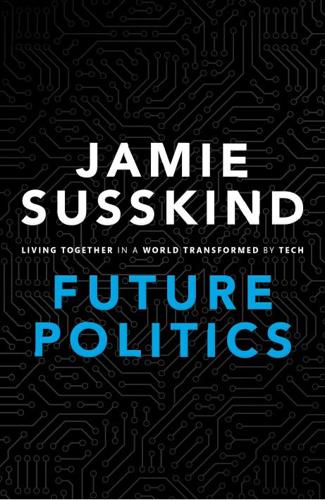
Future Politics: Living Together in a World Transformed by Tech
by
Jamie Susskind
Published 3 Sep 2018
Jeremy Useem, ‘How Online Shopping Makes Suckers of Us All’, Atlantic, May 2017 Issue <https://www.theatlantic.com/magazine/ archive/2017/05/how-online-shopping-makes-suckers-of-usall/521448/?utm_source=nextdraft&utm_medium=email> (accessed 1 December 2017). Benjamin Reed Shiller, ‘First-Degree Price Discrimination Using Big Data’, Brandeis University, 19 January 2014 <http://benjaminshiller. OUP CORRECTED PROOF – FINAL, 30/05/18, SPi РЕЛИЗ ПОДГОТОВИЛА ГРУППА "What's News" VK.COM/WSNWS 420 Notes com/images/First_Degree_PD_Using_Big_Data_Jan_18,_2014.pdf > (accessed 1 December 2017). 35. Shiller, ‘First-Degree Price Discrimination’. 36. See Lawrence Lessig, Code Version 2.0 (New York: Basic Books, 2006). Chapter 15 1. See Axel Honneth, The Struggle for Recognition: The Moral Grammar of Social Conflicts, translated by Joel Anderson (Cambridge: Polity Press, 2005). 2.
…
Moreover, tech firms could routinely exercise power in ways that are wrongheaded, foolish, or unprincipled, but which don’t properly fall into the category of ‘abuses’. For now at least, the core aim of antitrust regulation is to prevent economic abuses in the form OUP CORRECTED PROOF – FINAL, 26/05/18, SPi РЕЛИЗ ПОДГОТОВИЛА ГРУППА "What's News" VK.COM/WSNWS 358 FUTURE POLITICS of price discrimination, predatory pricing, and the like, rather than to shape and constrain political power. But as we saw in chapter eighteen, the Data Deal means that many services are provided for free. No issue of economic abuse necessarily arises. The risk, therefore, is that the power of tech firms will fall outside the antitrust regulatory framework altogether.
…
Shead, Sam. ‘Amazon’s Supermarket of the Future Could Operate With Just 3 Staff—and Lots of Robots’. Business Insider, 6 Feb. 2017 <http:// www.businessinsider.com/amazons-go-supermarket-of-the-future3-human-staff-2017-2?r=UK&IR=T> (accessed 8 Dec. 2017). Shiller, Benjamin Reed. ‘First-Degree Price Discrimination Using Big Data’. Brandeis University, 19 Jan. 2014 <http://benjaminshiller.com/ images/First_Degree_PD_Using_Big_Data_Jan_18,_2014.pdf> (accessed 1 Dec. 2017). Shin, Laura. ‘The First Government to Secure Land Titles on the Bitcoin Blockchain Expands Project’. Forbes, 7 Feb. 2017 <https://www.forbes. com/sites/laurashin/2017/02/07/the-first-government-to-secure-landtitles-on-the-bitcoin-blockchain-expands-project/#432b8b494dcd> (accessed 30 Nov. 2017).

Statistical Arbitrage: Algorithmic Trading Insights and Techniques
by
Andrew Pole
Published 14 Sep 2007
The first demonstration examines a single pair that exhibits textbook reversionary behavior until a fundamental development, a takeover announcement, creates a breakpoint. Next we discuss the twofold impact of an international economic development, the credit crisis of 1998: introducing a new risk factor into the equity market—temporary price discrimination as a function of credit rating on corporate debt—and turning a profitable year (to May) into a negative year (to August). Next we consider how large redemptions from funds such as hedge, mutual, and pension, create temporary disruptions to stock price dynamics with deleterious effects on statistical arbitrage performance.
…
Notions of valuation of growth are dramatically different than when higher interest rates prevail, when time has a dollar value. With such equalization of valuations and with discriminatory factors rendered impotent, volatility between similar stocks will decrease. Higher interest rates are one factor that will increase stock price discrimination and increase the prevalence and richness of reversion opportunities. The process of increasing interest rates began at the end of 2004. The Federal Reserve raised rates in a long, unbroken sequence of small steps to 5 percent, and statistical arbitage generated decent returns again starting in 2006.
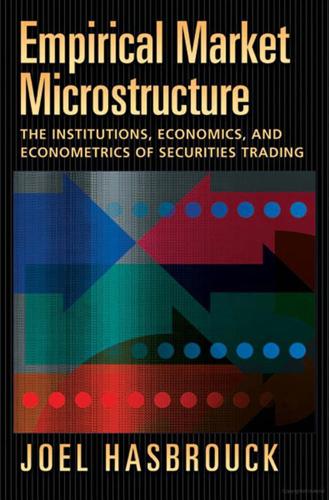
Empirical Market Microstructure: The Institutions, Economics and Econometrics of Securities Trading
by
Joel Hasbrouck
Published 4 Jan 2007
The pricing schedule is sufficiently discriminatory that a ω considerably greater than µX is necessary before the customer will consider an even an infinitesimal purchase. DEPTH The relationship between the supply schedule and expectation revision functions is broadly similar to the empirical finding depicted in figure 13.1, with the latter lying below the former. Price discrimination in the book can therefore potentially account for the empirical evidence. We will subsequently return to this point. 13.3.3 The Monopolistic Dealer The monopolistic dealer sets a price schedule to maximize E[P(q) − E[X |q]], where the outer expectation is over all incoming customers (or equivalently, quantities).
…
See Exponential utility Cholesky factorization, 83 Cointegration, 96 Crossing networks, 20 Harris, Lawrence, 91, 92, 158 Hvidkjaer, Soeren, 56 Illiquidity ratio, 93 Implementation shortfall, 144 Impulse response function, 81 Dealer markets, 14; limit orders in, 15, 159 196 INDEX Information share, 101 Interdealer markets, 15, 116 Invertibility: multivariate, 79; and unit roots, 114; univariate, 36 Kiefer, Nicholas, 56 Kyle, A. S., 43, 61 Limit order, 10 Limit order markets, 10; price discrimination in, 134 Liquidity: attributes, 4; of competitive dealer market, 133; externality, 5; in a limit order market, 134; noise traders, 61; and order choice, 118; and pricing error, 70; ratio, 93; supplied by a monopolistic dealer, 134; time variation in, 90. See also Price impact Lo, Andrew, 153 Madhavan, Ananth, 92 Manning rules, 15, 159, 172 Market failure, 49 Market order, 11 Martingale, 25 Mendelson, Haim, 108 Moving average processes, cointegrated, 97; univariate, 33; vector, 79 NASDAQ, 171.
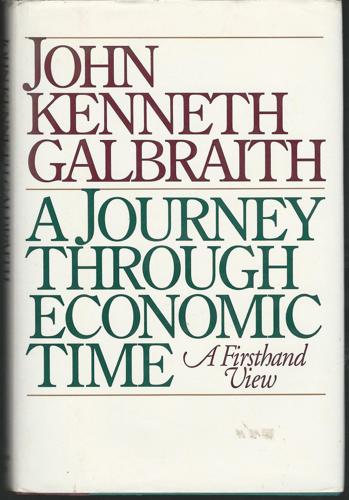
World Economy Since the Wars: A Personal View
by
John Kenneth Galbraith
Published 14 May 1994
The American Beauty rose can be produced in the splendor and fragrance which bring cheer to its beholder only by sacrificing the early buds which grow up around it." As with the rose, so with the Standard Oil Company. "This is not an evil tendency in business. It is merely the working-out of a law of nature and a law of God."17 This did align God and the American Beauty rose with railroad rebates, exclusive control of pipelines, systematic price discrimination, and some other remarkably aggressive business practices. V In 1956, the retiring president of the National Association of Manufacturers called solemnly in the name of Herbert Spencer on the working men of the country to reject the slavery of their unions and on businessmen to renounce the paternalism of Washington.
…
The position of the worker who is protected against arbitrary firing by a sound seniority system is far from ideal if he receives an entirely nondiscriminatory discharge as the result of an insufficiency of demand for the product he is making. This is especially so if a general shortage of demand keeps him from finding a job elsewhere. While unemployment compensation is better than nothing, a job is better than either. Even with an effective enforcement of the laws preventing price discrimination—roughly the use by a large firm of its size to exact and offer prices which small competitors cannot obtain or quote—the competitive position of the small retailer in a time of depression is not happy. Regardless of the conditions of competition, it is much better when the demand for everyone's product is good.
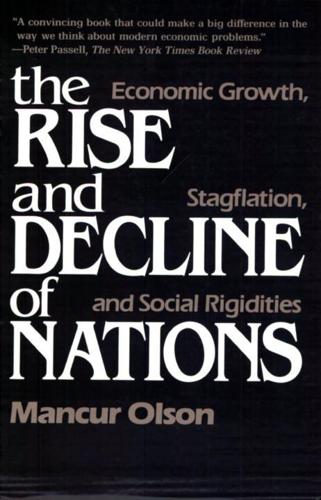
The Rise and Decline of Nations: Economic Growth, Stagflation, and Social Rigidities
by
Mancur Olson
With a tariff they may be able to sell what they sell on the home market at a higher price by shifting more of their output to the world market (where the elasticity of demand is usually greater), because they do not affect the world price that much (in other words, the organized exporters engage in price discrimination and thereby obtain more revenue than before). Even though the country had, and by assumption continues to have, comparative advantage in producing the good in question, eliminating the tariff will still increase efficiency. The reason is that the tariff is necessary to the socially inefficient two-price system that the organized exporters have arranged.
…
Hutt, The Economics of the Colour Bar (London: Merritt and Hatcher Ltd. for The Institute of Economic Affairs Ltd. by Andre Deutsch Ltd., 1964). 20. Ibid., p. 62. 21. Ibid., p. 69. 22. There is the possibility, mentioned in the last chapter, that exporters would want a tariff in order to engage in price discrimination. On the politics of the discrimination against rural export industries in many developing countries, see the works of Robert H. Bates. especially Markets and States in Tropical Africa (Berkeley: University of California Press, 1981). 1 am grateful to Barry Weingast for calling Bates's work to my attention. 23.
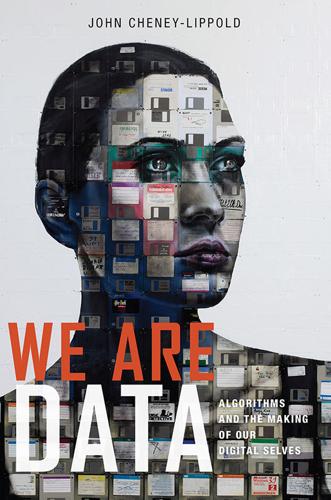
We Are Data: Algorithms and the Making of Our Digital Selves
by
John Cheney-Lippold
Published 1 May 2017
(Boca Raton, FL: Productivity, 2011); and John Walsh and Sue Godfrey, “The Internet: A New Era in Customer Service,” European Management Journal 18, no. 1 (2000): 85–92. 94. Tung-Hui Hu, “Real Time / Zero Time,” Discourse, 34, nos. 2–3 (2012): 164. 95. Aniko Hannak, Gary Soeller, David Lazer, Alan Mislove, and Christo Wilson, “Measuring Price Discrimination and Steering on E-commerce Web Sites,” Auditing Algorithms Research Group, 2014, http://personalization.ccs.neu.edu; Jakub Mikians, László Gyarmati, Vijay Erramilli, and Nikolaos Laoutaris, “Detecting Price and Search Discrimination on the Internet,” Proceedings of the 11th ACM Workshop on Hot Topics in Networks, 2012, 79–84. 96.
…
This is called “price steering,” in which a $200 hotel might show up on the first page of search results rather than the third or fourth if you are deemed more likely to pay for it. In another case, other researchers found that travel site Priceline.com charged users higher prices if they were using a mobile browser versus desktop. See Hannak et al., “Measuring Price Discrimination.” 98. Victor Mendoza, “A Queer Nomadology of Jessica Hagedorn’s Dogeaters,” American Literature 77, no. 4 (2005): 819. 99. David Cole, Kenneth Roth, and James Bamford, “‘We Kill People Based on Metadata,’” NYRblog, New York Review of Books, May 10, 2014, www.nybooks.com. 100. Grégoire Chamayou, “Patterns of Life: A Very Short History of Schematic Bodies,” The Funambulist Papers 57, 2014, http://thefunambulist.net. 101.

Dragnet Nation: A Quest for Privacy, Security, and Freedom in a World of Relentless Surveillance
by
Julia Angwin
Published 25 Feb 2014
Benjamin Reed Shiller, an economics professor at Brandeis University, analyzed data about a large panel of computer users and found that Netflix could raise profits by 1.4 percent if it adopted individually tailored prices based on customers’ Web-browsing histories. He found that Web-browsing data were more predictive than standard demographic data of users’ willingness to pay high prices for a Netflix subscription. “This suggests that 1st degree price discrimination might evolve from merely theoretical to practical and widely employed,” he concluded. * * * I wanted to block ad tracking. But first I had to sort through all the misinformation about how to block tracking. Many people believe that they can use Google Chrome’s “Incognito” mode or Microsoft Internet Explorer’s “InPrivate Browsing” mode to avoid being monitored online.
…
In one experiment, researchers at Carnegie Mellon: Laura Brandimarte, Alessandro Acquisti, and George Loewenstein, “Misplaced Confidences: Privacy and the Control Paradox,” Social Psychological and Personality Science, August 9, 2012. http://spp.sagepub.com/content/early/2012/08/08/1948550612455931.abstract. Calo says that market: Calo, “Digital Market Manipulation.” Benjamin Reed Shiller, an economics: Benjamin Reed Shiller, “First Degree Price Discrimination Using Big Data” (Working Paper Series, Brandeis University, August 20, 2013), http://www.brandeis.edu/departments/economics/RePEc/brd/doc/Brandeis_WP58R.pdf. Incognito mode is privacy protection: Google, Inc., “Incognito Mode (Browse in Private),” google.com, accessed August 22, 2013, https://support.google.com/chrome/answer/95464?
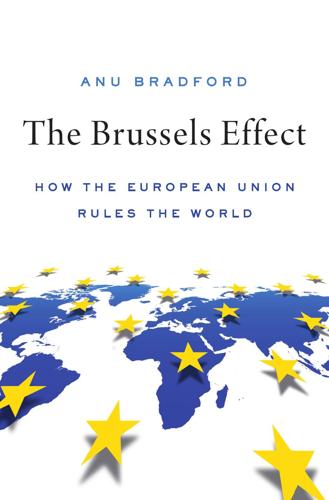
The Brussels Effect: How the European Union Rules the World
by
Anu Bradford
Published 14 Sep 2020
Use of geo-blocking of such services has become widespread and remains protected by law, including by the new EU regulation on geo-blocking.44 Geo-blocking has also been used in the field of online sales of both products and services, often motivated by the opportunity to engage in price discrimination. For instance, a 2013 report by the Australian government concluded that techniques such as geo-blocking were being used to implement substantial price discrimination to the disadvantage of Australian consumers.45 This included Australians paying 50% more on average for professional software. Geo-blocking could therefore, in theory, significantly limit the use of cross-border e-commerce.
…
In 2018, the European Commission fined the clothing retailer Guess €40 million for blocking retailers from advertising and selling across borders in other EU member states, maintaining artificially high retail prices.48 Third, the existence of competition limits the utility derived from geo-blocking. Price discrimination is compromised in instances where alternative providers exist, ready to undercut the supra-competitive price charged in a geo-blocked market. Thus, companies are less likely to resort to geo-blocking when doing so would only hand over the blocked market to their competitors. Finally, it is unlikely that developing technologies to accomplish divisibility is the best use of company talents and resources.
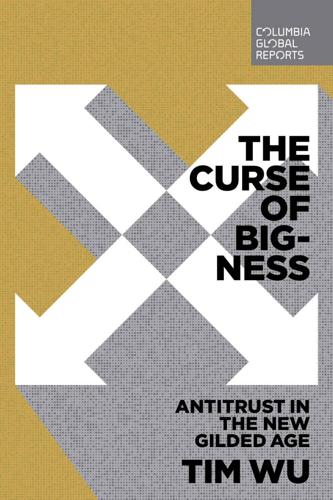
The Curse of Bigness: Antitrust in the New Gilded Age
by
Tim Wu
Published 14 Jun 2018
.* This theory was deployed to defend AT&T, among the most entrenched monopolists in American history, yet apparently so afraid of potential competition that any wrongdoing was unthinkable.† When it came to the monopolist’s conduct, both antitrust enforcers and Congress were guilty of a similar misunderstanding. What Congress had condemned as abusive conduct—predatory pricing, price discrimination, coercive tying of unwanted products—was really no such thing, but being practiced for the best and happiest of reasons. A cascade of Chicago School papers based purely on pricing theory and ignoring any strategic considerations (let alone evidence), suggested that the monopolist had little to gain from these practices, and so must presumably be doing them to make their operations more efficient.
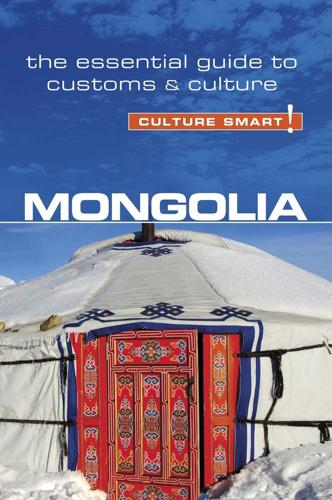
Mongolia - Culture Smart!: The Essential Guide to Customs & Culture
by
Alan Sanders
Published 1 Feb 2016
There is a monument to the victims of repression near Genghis Khan Square. The Military Museum, International Intellectual Museum (puzzle toys, logic games), Railroad History Museum (equipment of the Ulan Bator Railway), Ulan Bator City Museum (in a Russian house built in 1904) are all in central Ulan Bator. There is a Theater Museum too. Most museums apply price discrimination, that is, charge foreigners more than citizens for entrance tickets. The Museum of Natural History is closed for repairs at the time of writing. Cinemas There are several modern wide-screen and 3D cinemas in Ulan Bator that sometimes show American and British films, including the Tengis in Independence Square (Tusgaar togtnolyn talbai).
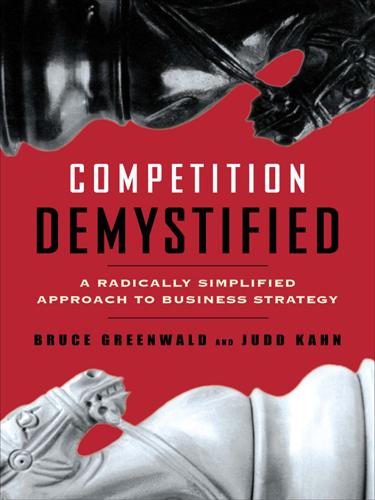
Competition Demystified
by
Bruce C. Greenwald
Published 31 Aug 2016
Instead of preannouncing a price change to the industry, now the producers had thirty days after it had gone into effect to make the change public. The most-favored-nation clauses were forbidden, on the grounds they “discourage discounting and promote price uniformity.” The judge said nothing about the Robinson-Patman Act, which prohibits a seller from price discrimination among buyers. The judge found that the four producers constituted an “oligopoly,” and as such, were proscribed from practices that were not in themselves illegal. It took two additional years, until 1983, for the FTC itself to reaffirm most of the judge’s ruling. Even though there was no collusion to fix prices, the commission wrote, the companies had restrained competition.
…
Thus, other Junipers were likely to follow. The alternative possibility was that Cisco’s competitive advantages were fundamentally unimpaired, in which case Juniper’s ultimate success in this market would be modest, at best. *These pricing structures do have some drawbacks. They may limit the revenue-harvesting benefits of price discrimination—charging more to customers who put a high value on the goods or services, like airline travelers who need tickets for tomorrow, and less to customers who put a lower value on the product, like travelers who will buy bargain fares months in advance, or take any flight available at the last minute.

Shadow Libraries: Access to Knowledge in Global Higher Education
by
Joe Karaganis
Published 3 May 2018
Gomez was pronounced not guilty in March 2017, but the prosecutor has appealed the verdict. 9 Canada’s recent “Access Copyright” collective licensing agreements fell apart in 2012 in part over obligations to monitor faculty communication for unauthorized distribution of materials (Amani 2013). 10 The Georgia State ruling was widely viewed as a win for educational fair use: of seventy-five initial claims of infringement brought by the publishers (here, Cambridge University Press, Oxford University Press, and Sage Publications), the court found in favor of only four—in each case representing the copying of multiple full chapters. While the ruling appears to give universities more scope for digitization and compilation of materials for classroom use, the decision was a complicated one that established no clear boundaries or tests (Butler 2016). 11 Price discrimination is also maintained through the secrecy surrounding publisher-university deals, enforced through contracts. In the United States, Bergstrom and Courant have done the most to reconstruct this terrain through Freedom of Information Requests to public institutions. See Bergstrom et al. 2014. 12 Such measures are often combined with a longer list of exceptions and limitations sought by libraries and archives, which have focused in recent years on building digital collections for works that are out of print, “orphaned” (i.e., without an identifiable copyright holder), or otherwise unavailable. 13 In 1971, a compromise “Berne Appendix” was passed that introduced a number of remedies for developing countries, including limited compulsory licensing solutions.
…
B., 9, 19 Thomson, 243 Thorold’s, 121 Three-step test, 14 Torrent sites, 26, 37–38, 152n45, 153n53, 264n57 Torture, 110–111 Trade Related Aspects of Intellectual Property Rights (TRIPS), 122, 130, 263n42, 277n2 Tshwane University of Technology, 136 Twitter, 235 Typewriters, 34, 93 Tyrowicz, J., 64 Ukraine, 16 UNESCO, 19, 32, 71 Union Library Bill, 194–195 UNISA, 109, 116–119, 143–144, 149n15 United Kingdom cross-national pricing and, 122–123 developed print market of, 68 downloading use in, 16 Imperial Copyright Act and, 130 India and, 187, 195, 197, 209, 219n54 International Student Editions (ISEs) and, 123 Poland and, 165 South Africa and, 111, 118, 122–125, 128, 133, 147 Special 301 Watch lists and, 125 university presses and, 111, 128–129 United States, 5 AIDS medications and, 130 Amazon and, 40, 61–64, 73n1, 74n5, 203, 205, 215, 219n50, 241 annual new titles in, 48 Anti-Apartheid Act and, 112 Argentina and, 82 Brazil and, 229 Cold War and, 197–198 cross-national pricing and, 122–123 database price increases in, 8 developed print market of, 68 differential pricing and, 12 downloading use in, 16 Eudeba and, 82 exceptions in, 165 Georgia State University case and, 11, 20n10 India and, 195, 197–198, 203, 218n35 intellectual property and, 44 International Student Editions (ISEs) and, 123 Kinkos lawsuit and, 10 Kirtsaeng v. John Wiley & Sons, Inc. and, 13, 123–125, 147 open access and, 6, 28 pace of digitization in, 73 Poland and, 165 price discrimination and, 20n11 public system strength of, 8 publisher surveys and, 4 radical publishers and, 111 resale of used books and, 9 Russia and, 44, 198 South Africa and, 111–112, 121–123, 125, 128, 130, 144–145, 147 Special 301 Watch lists and, 125 student boom in, 7 textbooks and, 8–9, 12, 19n3, 112, 121, 123, 144–145, 197, 200, 203, 215 university presses and, 128–129 used books and, 203 Wheat Loan program and, 197–199, 217n26 United States Trade Representative (USTR), 49n12, 228, 236 Universal Copyright Convention (UCC), 32 Universal libraries, 25, 39, 48, 73, 187–188 Universidade Paulista (Unip), 227 Universidade São Judas Tadeu, 228 Universidades Metropolitanas Unidas (UniFMU), 227 Universities.

The Wealth of Networks: How Social Production Transforms Markets and Freedom
by
Yochai Benkler
Published 14 May 2006
As a practical matter, this interpretation expands the formal rights of copyright holders to cover any and all computer-mediated uses of their works, because no use can be made with a computer without at least formally implicating the right to copy. More important than the formal legal right, however, this universal baseline claim to a right to control even simple reading of one's copyrighted work marked a change in attitude. Justified later through various claims--such as the efficiency of private ordering or of price discrimination--it came to stand for a fairly broad proposition: Owners should have the right to control all valuable uses of their works. Combined with the possibility and existence of technical controls on actual use and the DMCA's prohibition on circumventing those controls, this means that copyright law has shifted.
…
Lemley, "Intellectual Property and Shrinkwrap Licenses," Southern California Law Review 68 (1995): 1239, 1248-1253. 185. 86 F.3d 1447 (7th Cir. 1996). 186. For a more complete technical explanation, see Yochai Benkler, "An Unhurried View of Private Ordering in Information Transactions," Vanderbilt Law Review 53 (2000): 2063. 187. James Boyle, "Cruel, Mean or Lavish? Economic Analysis, Price Discrimination and Digital Intellectual Property," Vanderbilt Law Review 53 (2000); Julie E. Cohen, "Copyright and the Jurisprudence of Self-Help," Berkeley Technology Law Journal 13 (1998): 1089; Niva Elkin-Koren, "Copyright Policy and the Limits of Freedom of Contract," Berkeley Technology Law Journal 12 (1997): 93. 188.
…
Lemley, "Intellectual Property and Shrinkwrap Licenses," Southern California Law Review 68 (1995): 1239, 1248-1253. 185. 86 F.3d 1447 (7th Cir. 1996). 186. For a more complete technical explanation, see Yochai Benkler, "An Unhurried View of Private Ordering in Information Transactions," Vanderbilt Law Review 53 (2000): 2063. 187. James Boyle, "Cruel, Mean or Lavish? Economic Analysis, Price Discrimination and Digital Intellectual Property," Vanderbilt Law Review 53 (2000); Julie E. Cohen, "Copyright and the Jurisprudence of Self-Help," Berkeley Technology Law Journal 13 (1998): 1089; Niva Elkin-Koren, "Copyright Policy and the Limits of Freedom of Contract," Berkeley Technology Law Journal 12 (1997): 93. 188.

Culture and Prosperity: The Truth About Markets - Why Some Nations Are Rich but Most Remain Poor
by
John Kay
Published 24 May 2004
Airlines have the sophisticated yield management systems of chapter 12 to handle precisely this problem. Their aim is not to fill the plane, but to strike a balance between filling seats and obtaining good prices for seats. If they could read minds and gauge exactly how much each passenger would be willing to pay, they could engage in perfect price discrimination 7 and achieve Pareto efficiency. But of course they can't. So free trade leads to Pareto efficiency only in perfectly competitive markets because only perfectly competitive markets are free of these incentive compatibility problems. Market economies that are competitive but not perfectly competitive offer many opportunities for Pareto improvements.
…
Dworkin (1977), chap. 4; Waldron (1984), 153-67. 4. Berlin (2000). 5. For a summary of the standard economic approach to the value-of-life issues, see Jones-Lee (1976). For a well-balanced background to why this approach is untenable, see Douglas and Wildavsky (1982). 6. Often called a Pareto optimum. 7. Perfect-"ftrst degree"-price discrimination tailors the price for each good sold precisely to its user so that all consumer surplus is extracted. 8. Arrow (1951b). Part IV: THE TRUTH ABOUT MARKETS Chapter 17: Neoclassical Economics and After ••••••••••••••••••••••••••••••••••••• 1. For example, for James Tobinn the invisible hand is "one of the great ideas of history and one of the most influential."

The Future of the Internet: And How to Stop It
by
Jonathan Zittrain
Published 27 May 2009
Who would complain about receiving a coupon for $10 off the listed price of an item, even if the coupon were not transferable to any other Amazon user? (The answer may be “someone who did not get the coupon,” but to most people the second scenario is less troubling than the one in which different prices were charged from the start.)21 If data mining could facilitate price discrimination for Amazon or other online retailers, it could operate in the tangible world as well. As a shopper uses a loyal-customer card, certain discounts are offered at the register personalized to that customer. Soon, the price of a loaf of bread at the store becomes indeterminate: there is a sticker price, but when the shopper takes the bread up front, the store can announce a special individualized discount based on her relationship with the store.
…
Hiawatha Bray, BC Warns Its Alumni of Possible ID Theft After Computer Is Hacked, BOSTON GLOBE, Mar. 17, 2005, at E3, available at http://www.boston.com/business/ technology/articles/2005/03/ 17/bc_warns_its_alumni_of_possible_id_theft_ after_computer_is_hacked/. 19. See Privacy Rights Clearinghouse, A Chronology of Data Breaches, http://www.privacyrights.org/ar/ChronDataBreaches.htm (last visited June 1, 2007). 20. Amazons Old Customers “Pay More,” BBC NEWS, Sept. 8, 2000, http://news.bbc.co.uk/ 2/hi/business/914691.stm. 21. For more on price discrimination for information goods, see William Fisher, When Should We Permit Differential Pricing of Information? (2007) (working draft, on file with author). 22. See Paul Saffo, Sensors: The Next Wave of Infotech Innovation, http://www.saffo.com/essays/sensors.php (last visited June 1, 2007). 23. See Gordon E.

The Fissured Workplace
by
David Weil
Published 17 Feb 2014
This aspect of wage determination explains the large-employer wage premium discussed in Chapter 2. The basic monopsony model assumes that an employer will set a single wage rate for workers of a particular type (that is, skill or occupation) rather than follow what is called in a monopoly situation a price discrimination policy (that is, charging different prices to different consumers). The need to set a single wage for the workplace has the effect of pushing up the cost to the employer of hiring more workers of a given type, since the additional cost of one more worker requires paying him or her more, as well as more for all who are already employed at that type of work.29 In principle, an employer with monopsony power could compensate workers according to their individual contribution to production (or “marginal product,” the additional output per worker) if it pursued a varied wage policy.
…
The need to set a single wage for the workplace has the effect of pushing up the cost to the employer of hiring more workers of a given type, since the additional cost of one more worker requires paying him or her more, as well as more for all who are already employed at that type of work.29 In principle, an employer with monopsony power could compensate workers according to their individual contribution to production (or “marginal product,” the additional output per worker) if it pursued a varied wage policy. But this goes against the fairness grain and, as we have seen, has never been a common form of compensation. Wage discrimination (à la price discrimination) is rarely seen in large firms despite the benefits it could confer. As long as workers are under one roof, the problems presented by horizontal and vertical equity remain. But what if the large employer could wage discriminate by changing the boundaries of the firm itself? What if, instead of facing a wage determination problem for a large and varied workforce, it creates a situation of setting prices for work to be done by other parties external to the enterprise?
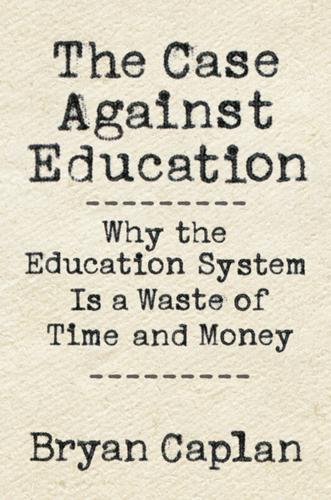
The Case Against Education: Why the Education System Is a Waste of Time and Money
by
Bryan Caplan
Published 16 Jan 2018
Using list price is tempting, but misguided. Colleges’ standard financial strategy is to combine an exorbitant list price with ample discounts. While schools frame this discounting as high-minded do-gooding, it amounts to what economists call “price discrimination”—tailoring prices to squeeze extra profits out of richer and less flexible customers.25 Price discrimination is the standard story about why travelers pay vastly more for same-day plane tickets. List tuition does not capture the “true cost of schooling” any more than same-day plane fare captures the “true cost of flying.” From this vantage point, there is a fundamental divide between “institutional grants”—tuition breaks offered by schools themselves—and federal, state, private, and employer grants.
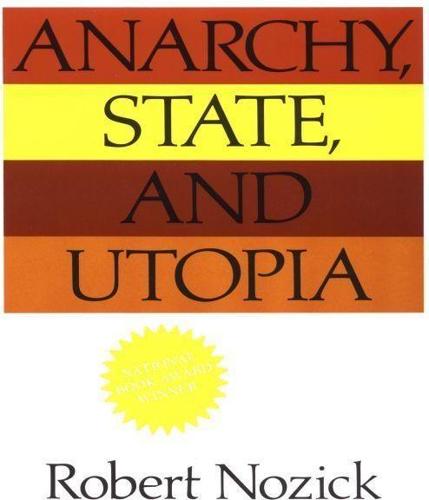
Anarchy State and Utopia
by
Robert Nozick
Published 15 Mar 1974
To see how close we are to the beginnings, notice that nothing said herein explains why not every scientific explanation (that does not appeal to intentions) of a functional relationship between variables is an invisible-hand explanation. 14 See Max Weber, Theory of Social and Economic Organization (New York: Free Press, 1947), p. 156; and Max Rheinstein, ed., Max Weber on Law in Economy and Society (Cambridge, Mass.: Harvard University Press, 1954), Ch. 13. 15 Compare H. L. A. Hart’s treatment of the parallel problem for the existence of a legal system in The Concept of Law (Oxford: The Clarendon Press, 1961), pp. 113-120. 16 On the claim that physicians do this, see Reuben Kessell, ”Price Discrimination in Medicine,” Journal of Law and Economics, 1, no. 1 (October 1958), 20-53. CHAPTER 3 / Moral Constraints and the State 1 Here and in the next section I draw upon and amplify my discussion of these issues in footnote 4 of “On the Randian Argument,” The Personalist, Spring 1971. 2 For a clear statement that this view is mistaken, see John Rawls, A Theory of Justice (Cambridge, Mass.: Harvard University Press, 1971), pp. 30, 565-566. 3 Which does which?
…
New York: Vantage Books, 1963. Kant, Immanuel. Groundwork of the Metaphysic of Morals. Translated by H. J. Paton as The Moral Law. London: Hutchinson, 1956. Kant, Immanuel. The Metaphysical Elements of Justice. Translated by John Ladd. Indianapolis: Bobbs-Merrill, 1965. Kessell, Reubin. “Price Discrimination in Medicine.” Journal of Law and Economics I, no. I (October 1958):20-53. Kim, Jaegwon. “Causation, Nomic Subsumption, and the Concept of Event.” The Journal of Philosophy 70, no. 8 (April 26, 1973):217-36. Kirzner, Israel. Market Theory and the Price System, Princeton: D. Van Nostrand, 1963.

Digital Minimalism: Choosing a Focused Life in a Noisy World
by
Cal Newport
Published 5 Feb 2019
Grant, Marc N. Potenza, Aviv Weinstein, and David A. Gorelick, “Introduction to Behavioral Addictions,” American Journal of Drug and Alcohol Abuse 36, no. 5 (2010): 233–41, https://www.ncbi.nlm.nih.gov/pmc/articles/PMC3164585. Scientists have known since: Michael D. Zeiler and Aida E. Price, “Discrimination with Variable Interval and Continuous Reinforcement Schedules,” Psychonomic Science 3, nos. 1–12 (1965): 299, https://doi.org/10.3758/BF03343147. “It’s hard to exaggerate how much”: Adam Alter, Irresistible: The Rise of Addictive Technology and the Business of Keeping Us Hooked (Penguin Press, 2017), 128.
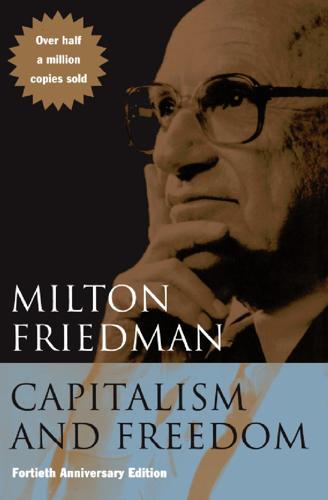
Capitalism and Freedom
by
Milton Friedman
Published 1 Jan 1962
He suggests procedural reforms and changes that in his view would limit the abuse of licensure arrangements. 5 Ibid., pp. 121–22. 6 Ibid., p. 146. 7 See, for example, Wesley Mitchell’s famous article on the “Backward Art of Spending Money,” reprinted in his book of essays carrying that title (New York: McGraw-Hill, 1937), pp. 3–19. 8 ‘See Reuben Kessel, “Price Discrimination in Medicine,” The Journal of Law and Economics, Vol. 1 (October, 1958), 20–53. Chapter X The Distribution of Income A CENTRAL ELEMENT IN the development of a collectivist sentiment in this century, at least in Western countries, has been a belief in equality of income as a social goal and a willingness to use the arm of the state to promote it.
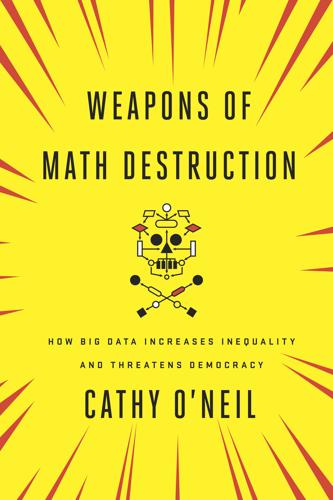
Weapons of Math Destruction: How Big Data Increases Inequality and Threatens Democracy
by
Cathy O'Neil
Published 5 Sep 2016
Baltimore officials charged Wells Fargo: Michael Powell, “Bank Accused of Pushing Mortgage Deals on Blacks,” New York Times, June 6, 2009, www.nytimes.com/2009/06/07/us/07baltimore.html. a former bank loan officer, Beth Jacobson: Ibid. 71 percent of them were in largely African American neighborhoods: Ibid. Wells Fargo settled the suit: Luke Broadwater, “Wells Fargo Agrees to Pay $175M Settlement in Pricing Discrimination Suit,” Baltimore Sun, July 12, 2012, http://articles.baltimoresun.com/2012-07-12/news/bs-md-ci-wells-fargo-20120712_1_mike-heid-wells-fargo-home-mortgage-subprime-mortgages. CHAPTER 3 the staff at U.S. News: Robert Morse, “The Birth of the College Rankings,” U.S.
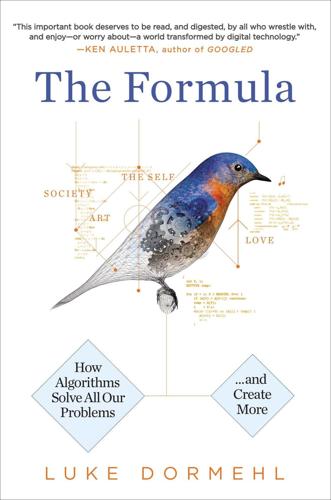
The Formula: How Algorithms Solve All Our Problems-And Create More
by
Luke Dormehl
Published 4 Nov 2014
As Joseph Turow, a professor at the University of Pennsylvania’s Annenberg School for Communication and frequent writer about all things marketing, has pointed out in an article that appeared in the New York Times: “The flow of data about us is so surreptitious and so complex that we won’t even know when price discrimination starts. We’ll just get different prices, different news, different entertainment.”42 The Discrimination Formula? A number of Internet theorists have argued that in the digital world, previous classifications used for discrimination (including race, gender or sexuality) will fall away—if they haven’t already.

Poorly Made in China: An Insider's Account of the Tactics Behind China's Production Game
by
Paul Midler
Published 18 Mar 2009
Factory owners were good at sizing up their customers, and they took their cues from the vendors who sold vegetables in China’s many wet markets. They tended to charge more for customers who could afford to pay extra. There was no such thing as a single “China price” for any given product. Pricing was all over the place, and manufacturers got whatever they could. Price discrimination was nothing new in business, but it was a practice associated with marketing companies, not manufacturers. Buyers expected that a factory would make its product available to all at the same price, but this was not how it worked in China. Importers resented that they were sized up in such a crude fashion, and that they might be disadvantaged in a pricing negotiation because of their background.

When the Wolves Bite: Two Billionaires, One Company, and an Epic Wall Street Battle
by
Scott Wapner
Published 23 Apr 2018
They were then prompted to spend another $5,400 to buy the actual cosmetics. Members who joined would earn bonuses on new recruits who came aboard, as long as they also made similar investments.8 But on November 18, 1975, Koscot was ordered by the FTC “to cease using its open-ended, multilevel marketing plan; engaging in illegal price fixing and price discrimination and imposing selling and purchasing restrictions on its distributors; and to cease making exaggerated earnings claims and other misrepresentations in an effort to recruit distributors.” Other cases soon followed, providing Richard with a treasure trove of material. Even in recent years, there have been companies with some of the same eyebrow-raising characteristics.
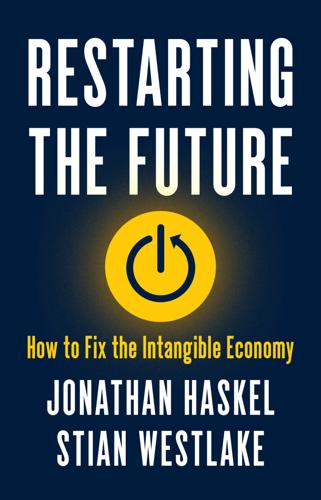
Restarting the Future: How to Fix the Intangible Economy
by
Jonathan Haskel
and
Stian Westlake
Published 4 Apr 2022
Journal of Economic Literature 52 (2): 375–423. https://doi.org/10.1257/jel.52.2.375. Hall, Robert E., and Dale W. Jorgenson. 1967. “Tax Policy and Investment Behavior.” American Economic Review 57 (3): 391–414. http://www.jstor.org/stable/1812110. Hannak, Aniko, Gary Soeller, David Lazer, Alan Mislove, and Christo Wilson. 2014. “Measuring Price Discrimination and Steering on E-Commerce Web Sites.” In Proceedings of the ACM SIGCOMM Internet Measurement Conference, 305–18. New York: Association for Computing Machinery. https://doi.org/10.1145/2663716.2663744. Harari, Yuval Noah. 2015. Sapiens: A Brief History of Humankind. New York: Harper. Hart, Oliver. 2017.
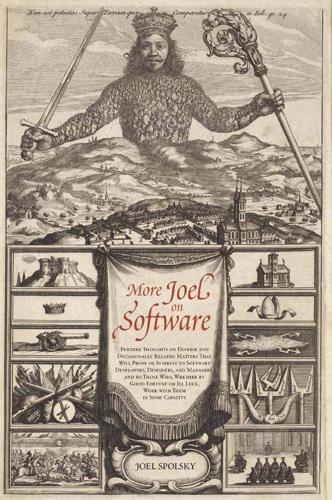
More Joel on Software
by
Joel Spolsky
Published 25 Jun 2008
Somehow, it seems like customers would rather pay $100 when everyone else is paying $100 than pay $79 if they know there’s someone out there who got it for $78. Heck, GM made a whole car company, Saturn, based on the principle that the offered price is fair and you don’t have to bargain. Even assuming you’re willing to deal with a long-term erosion of customer goodwill caused by blatant price discrimination, segmentation is just not that easy to pull off. First of all, as soon as your customers find out you’re doing it, they’ll lie about who they are: • Frequent business travelers rearranged their tickets to include dual Saturday-night stays. For example, a consultant living in Pittsburgh and working in Seattle Monday through Thursday would buy a two-week trip from Pittsburgh to Seattle and then a weekend trip home in the middle.

Two Nations, Indivisible: A History of Inequality in America: A History of Inequality in America
by
Jamie Bronstein
Published 29 Oct 2016
Wheat and cattle, timber and sheep, all had to be shipped by rail both as raw and as finished products, and the fact that only the railroads themselves understood the logic of their price structure meant that their rates seemed like unreasonable and monopolistic taxation to the people having to pay them.38 New states gained disproportionate power due to the importance of railroads to the less-developed regions of the United States and because senators were allocated without reference to population.39 At the same time, railroad price discrimination against small shippers sparked protest.40 As urban workers reacted to industrialization, so rural workers reacted to railroad corporatism. In Texas, farmers formed the Farmers’ Alliance, combining ideas about agrarian self-sufficiency with the notion that credit—paper money or “greenbacks”—should be more widely available.
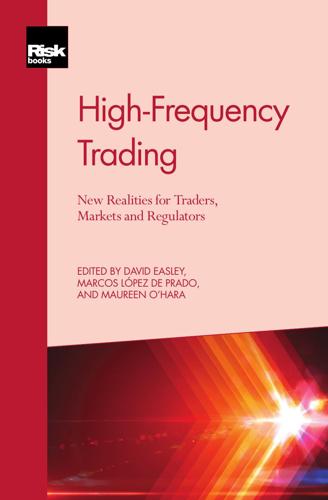
High-Frequency Trading
by
David Easley
,
Marcos López de Prado
and
Maureen O'Hara
Published 28 Sep 2013
Their proposal is based on both the price and the liquidity (the average observed spread of the stock, whereas the FESE tick size tables are determined solely according to the share price). The German High-Frequency Trading (HFT) Bill (“Hochfrequenzhandelsgesetz”) requires that standardised minimum tick sizes be introduced on German trading venues. Another important market structure issue is the role of price discrimination by trading venues through so-called maker–taker pricing14 and volume discounts. Some argue that this pricing scheme encourages “rebate arbitrage”, motivating trades that would not be profitable without the rebate but are marginally so with it. These trades are more likely to be associated with HF traders.

Political Order and Political Decay: From the Industrial Revolution to the Globalization of Democracy
by
Francis Fukuyama
Published 29 Sep 2014
Both the railroads and the health-care system had evolved out of the private sector with increasingly heavy political inputs in response to perceived abuses. Politicians in the nineteenth century limited the ability of railroads to recover costs through differential pricing, just as politicians today try to limit price discrimination by insurance companies. Both railroads and health care pitted diverse interests against one another: shippers and farmers against the railroads, doctors and drug companies against insurers. Both sectors generated economic inefficiencies due to the inconsistencies with which policies were applied across the country.
…
However, at this point in American history, there was no precedent for economic regulation on a national level; the Constitution’s Commerce Clause reserved regulatory powers to the federal government only in cases of foreign and interstate commerce. In the period following the Civil War, a variety of states had passed Granger laws that sought to prohibit price discrimination, and some, including Massachusetts, established relatively effective commissions to stabilize the market. The right of individual states to set prices and regulate economic activity was upheld by the Supreme Court in 1877 in Munn v. Illinois.7 But railroads could not be adequately regulated at a state level.
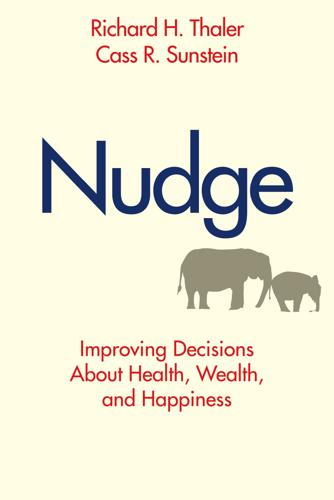
Nudge: Improving Decisions About Health, Wealth, and Happiness
by
Richard H. Thaler
and
Cass R. Sunstein
Published 7 Apr 2008
defined-benefit retirement plans defined-contribution retirement plans design: controlled by choice architects, details of, human factors incorporated into, informed, neutral, starting points inherent in, user-friendly Design of Everyday Things, The (Norman) Destiny Health Plan difficulty, degree of digital cameras discount pricing discrimination, laws against Disulfiram (antabuse) diversification heuristic divorce: and “above average” effect, and children, difficulty of obtaining, economic prospects affected by, law of, mandatory waiting period for, obtainable at will Doers dog owners, social pressures on Dollar a day incentive domestic partnership agreements “Don’t Mess with Texas,” eating: and conformity, and food display, and food selection, gender differences in Economist Econs: easy choices for, homo economicus, incentives for, investment decisions by, and money, not followers of fashion, Reflective Systems used by, unbiased forecasts made by, use of term education, accountability in, in Boston, in Charlotte, charter schools, child’s right to, and competition, complex choices in, controlled choice in, desegregation of, incentive conflicts in, No Child Left Behind, in San Marcos, Texas, school choice vouchers, status quo bias in, testing standards, test scores, underperforming in, in Worcester “efficient frontier,” Einstein, Albert elimination by aspects emails, Civility Check for Emanuel, Rahm Emergency Planning and Community Right to Know Act (1986) “emoticons,” employers: employee benefits offered by, profit-sharing plans of, and retirement plans endowment effect energy, invisibility of energy conservation: and cost-disclosing thermostats, and framing, and home-building industry, and social influences, voluntary participation programs in energy efficiency Energy Star Office Products Enron Corporation environmental issues, acid deposition program, air pollution, auto emissions, auto fuel economy, cap-and-trade system in, Clean Air Act, climate change, command-and-control regulation of, energy conservation, energy efficiency, energy use, feedback and information, greenhouse gas emissions, incentives for, international, Kyoto Protocol, nudges proposed for, ozone layer, recycling, risk labeling, and social influences, trading systems in, and tragedy of the commons, transparent costs of, voluntary participation programs Environmental Protection Agency (EPA), and auto fuel economy, Energy Star Office Products program, Green Lights program of, Toxic Release Inventory of Equities (stocks) equity premium ERISA (Employee Retirement Income Security Act of) error, expecting “everything matters,” evil nudgers expectations Experion Systems externalities FAFSA (free application for federal student aid) families, dispersion of Family and Medical Leave Act Federal Express, Federal Housing Administration (FHA) Federal Trade Commission (FTC) feedback, plans (college savings accounts) flexible spending accounts follow through failure to, Food and Drug Administration (FDA) food display food selection footnotes, uses of forced choice forcing function Ford, Harrison (k) plans framing France, organ donations in Franklin, Benjamin freedom of choice, danger of overreaching, elimination of, Just Maximize Choices, opposition to, and presumed consent, and required choice frequency Friedman, Milton friendly discouragement fungibility gains and losses gambling, low stakes, mental accounting in, self-bans, and strategy Gandhi, Mohandas gas tank caps Gateway Arch, St.

Digital Empires: The Global Battle to Regulate Technology
by
Anu Bradford
Published 25 Sep 2023
In their official guidance on the platform economy in 2022, the Chinese authorities reiterated their commitment to curtailing platform companies’ data abuses, including “trading of data on black markets” or deployment of big data toward price discrimination.142 In addition to citizens’ data privacy, the Chinese government is concerned with unfair business practices by dominant tech companies. In particular, Chinese legislators have curtailed practices such as price discrimination—often fueled by data and algorithms—that allow these companies to exploit consumers.143 Also, the PIPL bans companies from using personal information to facilitate “differential treatment to individuals in terms of trading price or other trading conditions.”144 The recent crackdown on the tech industry in the name of common prosperity has also sought to introduce greater fairness in the marketplace, distributing power away from tech companies, not only toward the state, but also toward internet users and digital consumers.

Cheap: The High Cost of Discount Culture
by
Ellen Ruppel Shell
Published 2 Jul 2009
A close cousin to price rationing is the equally familiar “yield management,” whereby airlines and hotels moderate prices depending on demand. This practice is widespread and largely (if grumpily) tolerated. We have come to accept the idea that the guy sitting next to us in the back of the plane might have paid far less than we did for the seat. “Price discrimination is considered fair if it takes place for a socially acceptable reason,” Sarah Maxwell told me. Of course, “socially acceptable” is determined by context. If we all agree that airlines have a right to charge someone double for a ticket because he or she happens to purchase it outside a certain time frame, so be it.

The Irrational Economist: Making Decisions in a Dangerous World
by
Erwann Michel-Kerjan
and
Paul Slovic
Published 5 Jan 2010
There is reason to go slow on a behavioral explanation here. In addition to the fact that most people do not buy warranties, competitively sold warranties are available for large purchases like automobiles (after the “free” manufacturer’s warranty expires). It may also be that warranties are a form of price discrimination. A buyer who considers himself lucky for having gotten a good deal on a good product may be more willing to pay for a warranty than a buyer who thinks his particular purchase and purchase price are run of the mill and par for the course. The first buyer, having discovered “treasure,” may be more willing to invest in protecting it.

Don't Be Evil: How Big Tech Betrayed Its Founding Principles--And All of US
by
Rana Foroohar
Published 5 Nov 2019
Nicholas Kristof, “Google and Sex Traffickers Like Backpage.com,” The New York Times, September 7, 2017. 37. Consumer Watchdog, “How Google’s Backing of Backpage Protects Child Sex Trafficking.” 38. Kieren McCarthy, “Google Lobbies Hard to Derail New US Privacy Laws—Using Dodgy Stats,” The Register, March 26, 2018. 39. “Platform Monopolies in NAFTA—The Body Camera Monopoly—Price Discrimination in the Airline Industry,” Open Market Institute, May 17, 2018. 40. Rana Foroohar, “Fear and Loathing in Silicon Valley,” Financial Times, July 23, 2018. 41. Author interview with David Greene. 42. Author interviews with diplomats in Brussels and Washington. 43. Germán Gutiérrez and Thomas Philippon, “How EU Markets Became More Competitive Than U.S.

The Measure of Progress: Counting What Really Matters
by
Diane Coyle
Published 15 Apr 2025
For many digital s ervices, marginal cost is effectively zero, so a zero price would represent efficient pricing. Information Rules drew some key lessons that still form the basis of successful platform strategies: try to gain first-mover advantage, scale up as fast as possible to attain the network benefits that cement your lead, price discriminate as much as possible by personalisation, and learn all you can about your customers from their behaviour in order to sell advertising. (The book also, presciently, warns that the dynamics of digital businesses will lead to market concentration and attract the interest of antitrust enforcers.
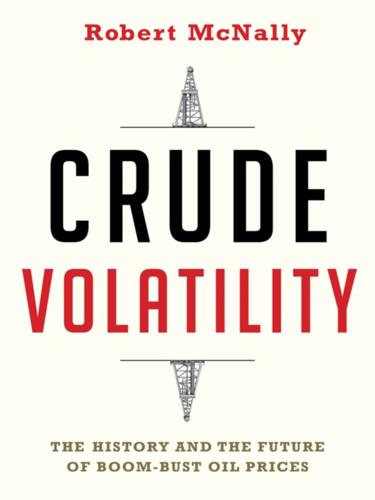
Crude Volatility: The History and the Future of Boom-Bust Oil Prices
by
Robert McNally
Published 17 Jan 2017
For example, nominal midcontinent crude oil prices rose by more than 300 percent between 1914 and 1918, whereas, Chicago gasoline prices rose by less than half that amount.42 While gasoline prices may have been rising less than crude oil and prices of other goods, they caused dislocations in industry and triggered many complaints from all over the country. In Kansas City, meat packers discarded trucks and went back to horse-drawn wagons: “Price of Gasoline Putting Horse Back in Harness Again,” one Indiana newspaper reported.43 Consumers charged gasoline prices were excessively high and that refiners and other were practicing price discrimination. The uproar began in 1915 and triggered Senate resolutions and an investigation by the Federal Trade Commission (FTC). The FTC concluded prices were “necessarily and naturally somewhat higher” in 1915 due to surging demand outpacing production, requiring inventory draws.44 Though the Commission cautioned that it was not clear how much higher gasoline prices should have been based on market conditions.45 Rising pump prices sparked rumors of pending bigger price jumps and shortages.46 In 1918 car dealers placed ads in newspapers to ensure their customers that gasoline production and inventories were adequate and “kill this gasoline shortage myth.”47 Motorists were outraged and officials launched investigations of industry practices, especially on the West Coast where actual shortages developed.48 “Gasoline prices follow crude,” Standard Oil of Indiana tried to explain to the public in 1920, promising it was “straining every fibre of its highly specialized [refining] organization to meet [gasoline] demand.”49 In June, 1920 the Federal Trade Commission again reported to Congress that rising gasoline prices were due “more to varying conditions of supply and demand in the light of emphasized and pessimistic statements as to the future supply than to a combination in restraint of trade.”50 This was the second such FTC investigation prompted by rising gasoline prices but certainly was not the last.
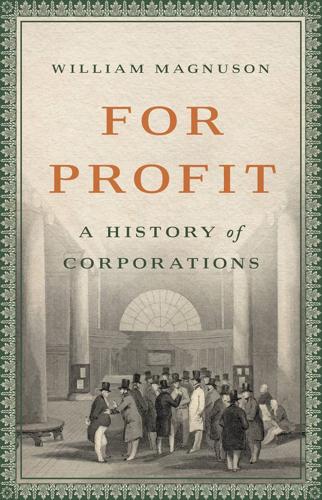
For Profit: A History of Corporations
by
William Magnuson
Published 8 Nov 2022
In 1887, Congress passed the Interstate Commerce Act, a comprehensive law governing railroads. It created a commission to monitor railroad practices and forbid their worst abuses, such as pooling (the practice of sharing profits between rival railroads, one common way of ensuring that railroads did not compete with one another) and price discrimination (the practice of charging different shippers different prices for the same service, a strategy that tended to hurt farmers and other small businesses).40 The depredations of the railroads also led to wider interest in addressing the looming problem of monopoly power, and in 1890 the country passed its first antimonopoly law.

The Equality Machine: Harnessing Digital Technology for a Brighter, More Inclusive Future
by
Orly Lobel
Published 17 Oct 2022
The first step, always, before seeking reform is to identify and understand the problem. In the digital space, analyzing data can expose inequities. By contrast, it is largely impossible to conduct such accurate, robust, ongoing, and granular detection of disparities when it comes to the very real price discrimination that exists offline. In one famous field experiment from the early 1990s, participants posed as buyers at used car dealerships. It’s not difficult to guess the results: the sellers gave women and people of color higher initial prices than they gave to white men. But how often and at how many dealerships can one run such an experiment?

How the Other Half Banks: Exclusion, Exploitation, and the Threat to Democracy
by
Mehrsa Baradaran
Published 5 Oct 2015
The irony, they point out, is that these alleged “collusive focal points were provided by the state legislatures.”127 An earlier study had indeed revealed evidence of price collusion among credit card companies Visa and MasterCard in the 1980s to drive up interest rates.128 Not only did the comprehensive payday pricing study show possible price collusion, it also showed discrimination: “The larger data contain stronger evidence of third-degree price discrimination: loan prices were higher in neighborhoods near military bases and in disproportionately minority neighborhoods, consistent with exploitation of price inelasticity among these demographic groups.”129 The study concluded that these prices could be reduced only if banks or other providers of credit could compete in this space.

How Markets Fail: The Logic of Economic Calamities
by
John Cassidy
Published 10 Nov 2009
Worries that the new combines were squeezing out smaller competitors and bilking customers led to the introduction of antitrust laws. The Sherman Antitrust Act of 1890 outlawed restraints of trade by existing monopolies and any attempt to create a new monopoly. The Clayton Antitrust Act of 1914 proscribed price discrimination, exclusive dealing contracts, and other predatory tactics that the trusts had used to boost their profits. During the same era, President Theodore Roosevelt (1901–1909) and his successor, William Howard Taft (1909–1913), issued lawsuits to break up more than a hundred of the trusts, including Standard Oil.

Evicted: Poverty and Profit in the American City
by
Matthew Desmond
Published 1 Mar 2016
Deborah Devine, Housing Choice Voucher Location Patterns: Implications for Participant and Neighborhood Welfare (Washington, DC: US Department of Housing and Urban Development, 2003); George Galster, “Consequences from the Redistribution of Urban Poverty During the 1990s: A Cautionary Tale,” Economic Development Quarterly 19 (2005): 119–25. 4. Milwaukee Area Renters Study, 2009–2011; US Department of Housing and Urban Development, Final FY 2008 Fair Market Rent Documentation System. 5. Robert Collinson and Peter Ganong, “Incidence and Price Discrimination: Evidence from Housing Vouchers,” working paper, Harvard University and the US Department of Housing and Urban Development, 2014; Eva Rosen, The Rise of the Horizontal Ghetto: Poverty in a Post–Public Housing Era, PhD diss. (Cambridge: Harvard University, 2014). 6. The Milwaukee Area Renters Study offered a unique opportunity to investigate if voucher holders were being overcharged because the sample included assisted and unassisted renters.

Competition Overdose: How Free Market Mythology Transformed Us From Citizen Kings to Market Servants
by
Maurice E. Stucke
and
Ariel Ezrachi
Published 14 May 2020
Prices for hotel rooms, in Vegas and elsewhere, change regularly. The price that savvy customers pay today might differ from tomorrow’s price. So, unless they are prepared to put in the exact same amount of work they put in today to find the best price tomorrow, they won’t. Moreover, as we’ll see, some casinos are engaged in sophisticated price discrimination, so the VIP price you receive might be higher or lower than the VIP price your grandmother or neighbor received.39 So, like credit card companies, the hotels can offer sophisticated buyers better deals, which are subsidized by the resort fees that the rest of us pay. Competition in these circumstances can indeed make things worse.40 Won’t people eventually recognize the scam and start adding up the fees?

The Zero Marginal Cost Society: The Internet of Things, the Collaborative Commons, and the Eclipse of Capitalism
by
Jeremy Rifkin
Published 31 Mar 2014
The proposal, which has no provisions for a multistakeholders approach, would have the effect of increasing government control of the Internet.9 The preamble to the proposal states unequivocally that the “policy authority for Internet-related public issues is the sovereign right of States.”10 The private sector is also beginning to stray from the three-party stakeholder alliance, seeking increased income and profits by way of price discrimination—a move that threatens to undermine one of the guiding principles of the Internet: network neutrality, a principle that assures a nondiscriminatory, open, universal Communications Commons in which every participant enjoys equal access and inclusion. The concept of network neutrality grew out of the end-to-end design structure of the Internet, which favors the users rather than the network providers.
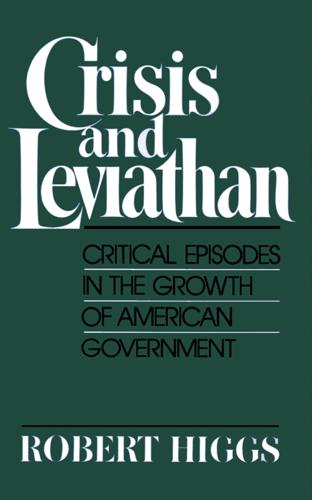
Crisis and Leviathan: Critical Episodes in the Growth of American Government
by
Robert Higgs
and
Arthur A. Ekirch, Jr.
Published 15 Jan 1987
More commonly it was an aggressively innovative firm, supplying improved products and reducing its costs of production and its prices, and increasing its share of the market as a result. Unsuccessful competitors complained bitterly that the "monopolists" were driving them to the wall. 9 Customers frequently objected to real or imagined price discrimination. More than anything else, rate discrimination provoked the outrage of midwestern shippers against the railroads. Often the criticism of a big corporation's alleged monopoly power could be deflected by showing that the firm produced better products or services in growing volumes at ever lower prices.
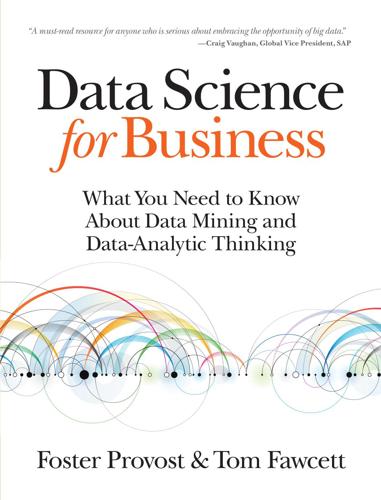
Data Science for Business: What You Need to Know About Data Mining and Data-Analytic Thinking
by
Foster Provost
and
Tom Fawcett
Published 30 Jun 2013
Modeling the probability of default had changed the industry from personal assessment of the likelihood of default to strategies of massive scale and market share, which brought along concomitant economies of scale. It may seem strange now, but at the time, credit cards essentially had uniform pricing, for two reasons: (1) the companies did not have adequate information systems to deal with differential pricing at massive scale, and (2) bank management believed customers would not stand for price discrimination. Around 1990, two strategic visionaries (Richard Fairbanks and Nigel Morris) realized that information technology was powerful enough that they could do more sophisticated predictive modeling—using the sort of techniques that we discuss throughout this book—and offer different terms (nowadays: pricing, credit limits, low-initial-rate balance transfers, cash back, loyalty points, and so on).
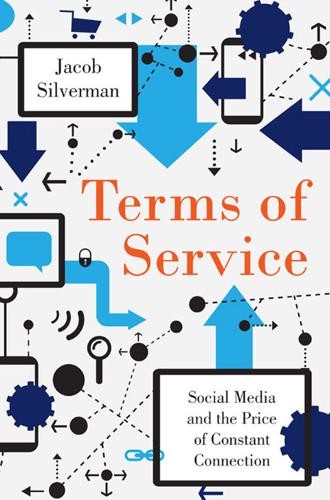
Terms of Service: Social Media and the Price of Constant Connection
by
Jacob Silverman
Published 17 Mar 2015
Dec. 1, 2013. huffingtonpost.com/sam-fiorella/the-insidiousness-of-face_b_4365645.html. 181 Criticism of LinkedIn: David Veldt. “LinkedIn: The Creepiest Social Network.” Interactually. May 9, 2013. interactually.com/linkedin-creepiest-social-network. 182 “He responded by saying”: Author interview with Franklin Leonard. Oct. 27, 2013. 183 Racist price discrimination: Benjamin Edelman and Michael Luca. “Digital Discrimination: The Case of Airbnb.com.” Harvard Business School working paper. Jan. 10, 2014. www.hbs.edu/faculty/Publication%20Files/14-054_e3c04a43-c0cf-4ed8-91bf-cb0ea4ba59c6.pdf. 184 “We have to have our dark corners”: Chris Heath. “Mad German Auteur, Now in 3-D!”

Them And Us: Politics, Greed And Inequality - Why We Need A Fair Society
by
Will Hutton
Published 30 Sep 2010
Legislation and regulation have the advantage of creating a level playing field that is fair for everyone, and ultimately cheaper in that every citizen and company knows that the presumption is that everyone will comply. The Sherman Act of 1890 had begun the introduction of pro-competition laws, but the watershed came with Wilson’s Clayton Act of 1914, which outlawed monopoly and unfair price discrimination. This was also the foundation of Roosevelt’s New Deal two decades later. However, judges were still needed to make the law stick. The two landmark cases were the successful actions against the aluminium giant Alcoa in 1948 and against AT & T in 1959. The latter was forced to license the transistor, and it was finally broken up into seven so-called ‘Baby Bells’ in 1984.
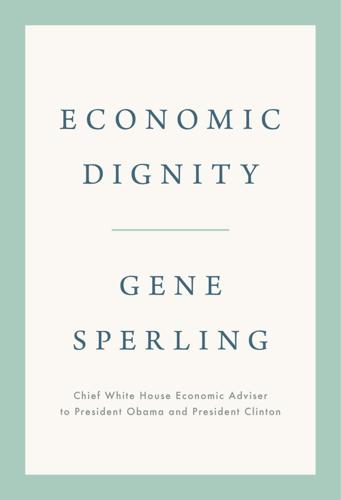
Economic Dignity
by
Gene Sperling
Published 14 Sep 2020
Their economic dignity is denied when they cannot care for the serious illness or disability of a loved one without bankrupting their families. This threat to economic dignity is directly due to a lack of adequate coverage, lifetime and annual limits on how much insurers will pay for critical care, limits on families’ out-of-pocket costs, or price discrimination against those with preexisting conditions.15 Take just one example of what this means. In October 2018, I spoke at the kickoff of the Nuns on the Bus tour with Sister Simone Campbell, Nancy Pelosi, Joe Sanberg, and nine-year-old Myka Eiler and her mom, Angela. Myka was born with a congenital heart defect and had two open heart surgeries before she was one year old.
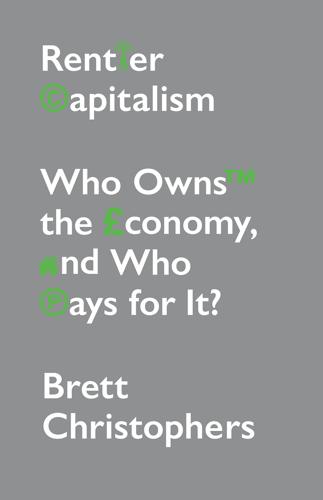
Rentier Capitalism: Who Owns the Economy, and Who Pays for It?
by
Brett Christophers
Published 17 Nov 2020
Just months after privatization, in January 2014, it proposed wholesale price changes that would have had the effect of massively penalizing its only major competitor in the bulk mail ‘access’ market, Whistl, which, with a distribution network covering only part of the country, relied on Royal Mail’s infrastructure elsewhere. The price changes were never implemented, but only because Whistl withdrew from the market – at the cost of some 2,000 jobs. Royal Mail’s actions, Ofcom has recently ruled, represented ‘a deliberate strategy of pricing discrimination against Whistl’.109 A £50 million fine was imposed. The chief culprit in this case, one might argue, was not in fact a weak regulator so much as an abuse of power – its pricing freedoms – by Royal Mail; and Ofcom did at least fine the company. But it was the regulator that conferred those freedoms in the first place.

Basic Economics
by
Thomas Sowell
Published 1 Jan 2000
During the era when local telephone companies were monopolies in their respective regions and their parent company— the American Telephone and Telegraph Company—had a monopoly of long-distance service, the Federal Communications Commission controlled the prices charged by A.T.&T., while state regulatory agencies controlled the price of local phone service. Another approach has been to pass laws against the creation or maintenance of a monopoly or against various practices, such as price discrimination, growing out of non-competitive markets. These anti-trust laws were intended to allow businesses to operate without the kinds of detailed government supervision which exist under regulatory commissions, but with a sort of general surveillance, like that of traffic police, with intervention occurring only when there are specific violations of laws.
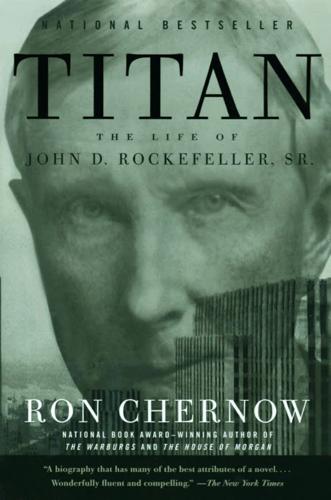
Titan: The Life of John D. Rockefeller, Sr.
by
Ron Chernow
Published 1 Jan 1997
In his thesis, Nelson, coached by Inglis, flatly denied that Standard Oil ever drove competitors from business unfairly. “These companies were treated with extreme fairness and in many cases with generosity,” he wrote, dismissing as mythical that Standard Oil had amassed power “through local price discrimination, bogus independents and espionage.” 32 In 1929, Nelson turned twenty-one on the same day that Rockefeller reached ninety. “The 90 makes my 21 seem mighty small and insignificant,” he wrote his parents, “just like a little sapling standing by a mighty fir. But the sapling still has time to grow and develop and someday it might itself turn into a tree of some merit.
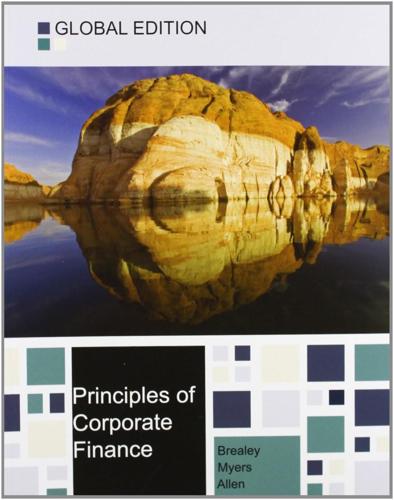
Principles of Corporate Finance
by
Richard A. Brealey
,
Stewart C. Myers
and
Franklin Allen
Published 15 Feb 2014
Of this, 120 million units are second-generation capacity, and the remaining 280 million units are third-generation capacity. 20Notice that we are assuming that all customers have to pay the same price for their gargle blasters. If Marvin could charge each customer the maximum price that that customer would be willing to pay, output would be the same as under free competition. Such direct price discrimination is illegal and in any case difficult to enforce. But firms do search for indirect ways to differentiate between customers. For example, stores often offer free delivery, which is equivalent to a price discount for customers who live at an inconvenient distance. 21To finance the expansion, Marvin is going to have to sell $1,000 million of new stock.